With lessons learned in the Vietnam War fresh in its mind, the United States Navy set out to develop a carrier-based interceptor with long legs to deal with threats from the Soviet Union. While the F-4 Phantom had its strengths, Soviet MiGs often had better maneuverability that smart pilots could take advantage of in a dogfight.
Influenced by the canceled F-111B program, Grumman’s 303 design would become the F-14 Tomcat: a variable-sweep wing fighter that would serve the U.S. Navy for more than 30 years. In many ways, Hollywood made the plane famous in the 1986 action movie Top Gun. In 2022, the plane made a cameo in the same movie’s sequel, Top Gun: Maverick.
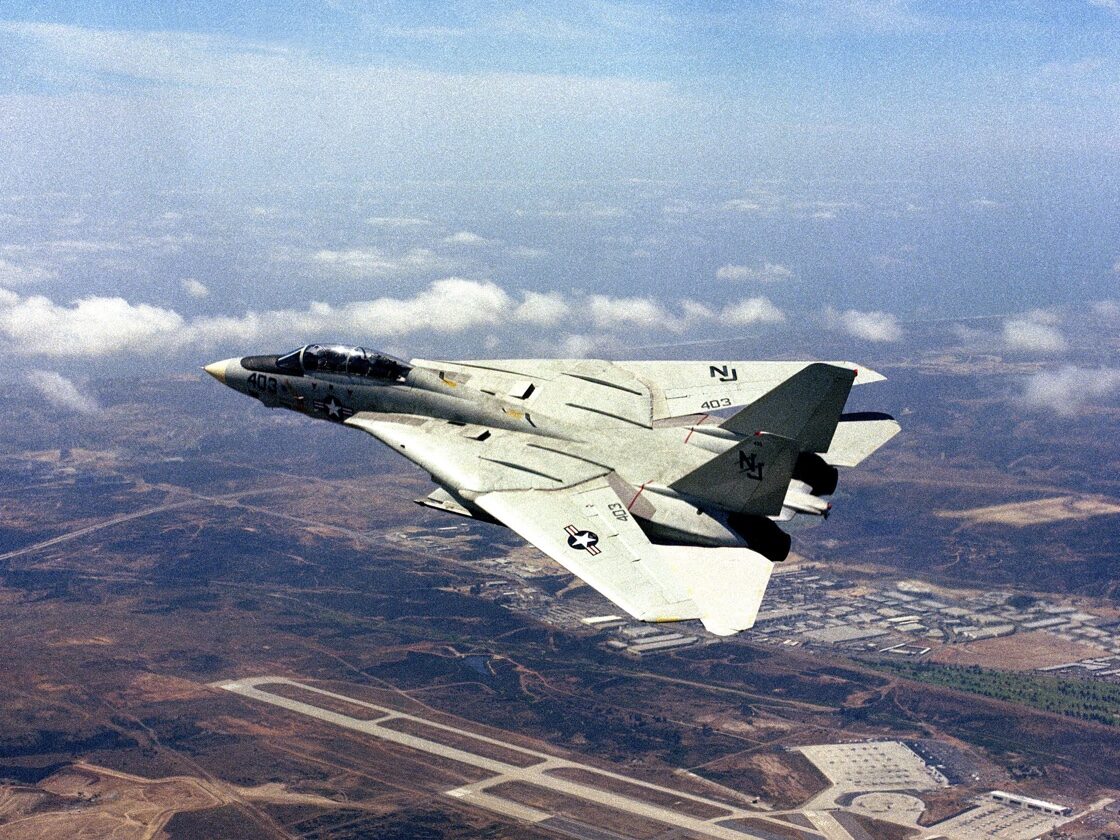
The United States Navy provided considerable support for the making of Top Gun: Maverick, which included providing access to F/A-18 Super Hornets as well as to the Nimitz-class nuclear-powered aircraft carriers USS Theodore Roosevelt (CVN-71) and USS Abraham Lincoln (CVN-72). Yet, such support didn’t result in the most authentic look at U.S. military operations.
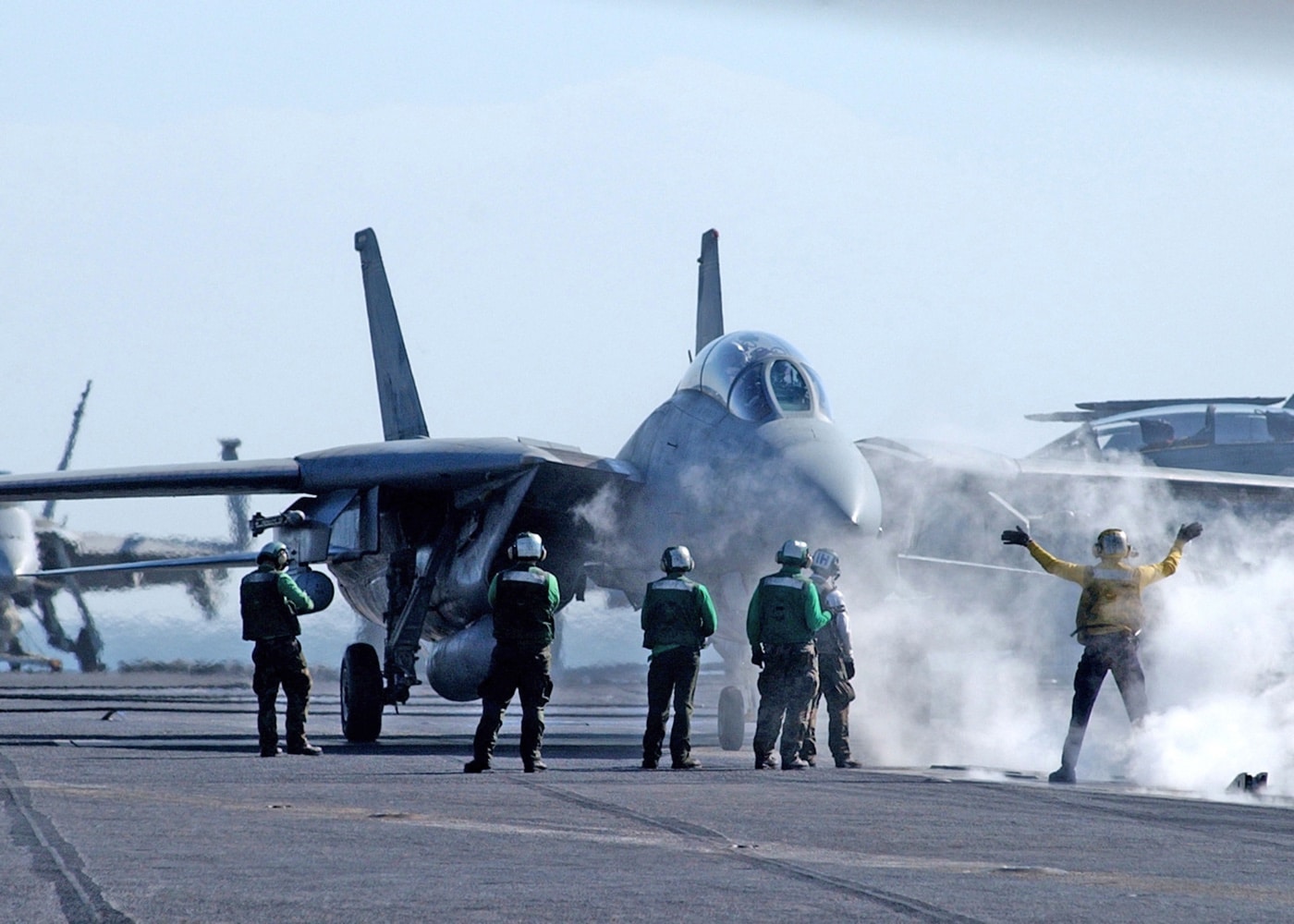
As with many action films, it needs to be viewed with no shortage of a “suspension of disbelief” — at least to accept that a late 50-something U.S. Navy aviator would be tasked for such a notable mission, not to mention be a test pilot for the not-so-secret SR-72 “Darkstar” hypersonic aircraft.
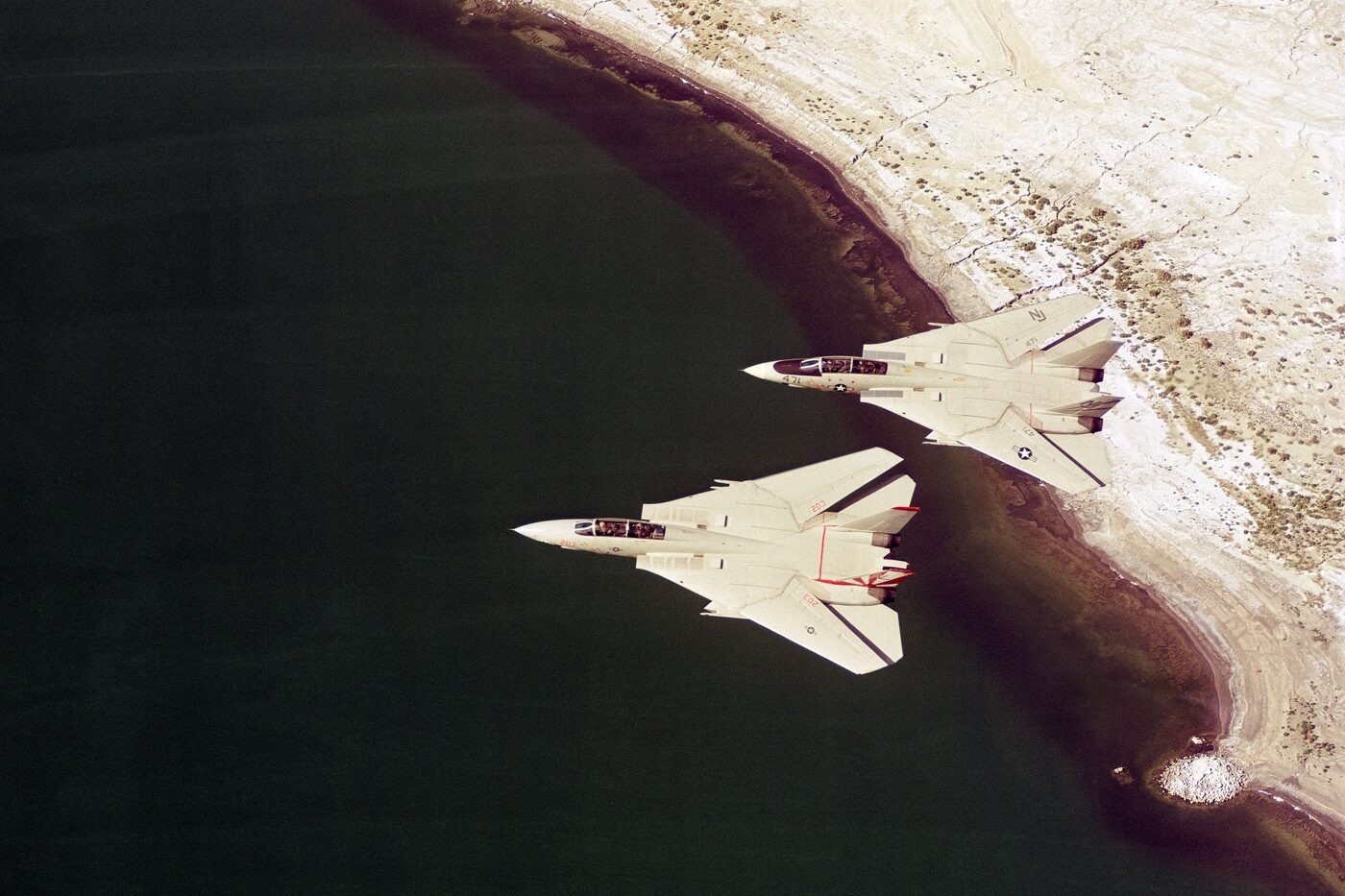
At times, Top Gun: Maverick is about as realistic as Tom Cruise’s Mission: Impossible franchise — but the point is to entertain, not educate. It remains a bombastic “popcorn” movie that can almost be watched on repeat!
And despite all of this, one sequence actually makes a bit of sense.
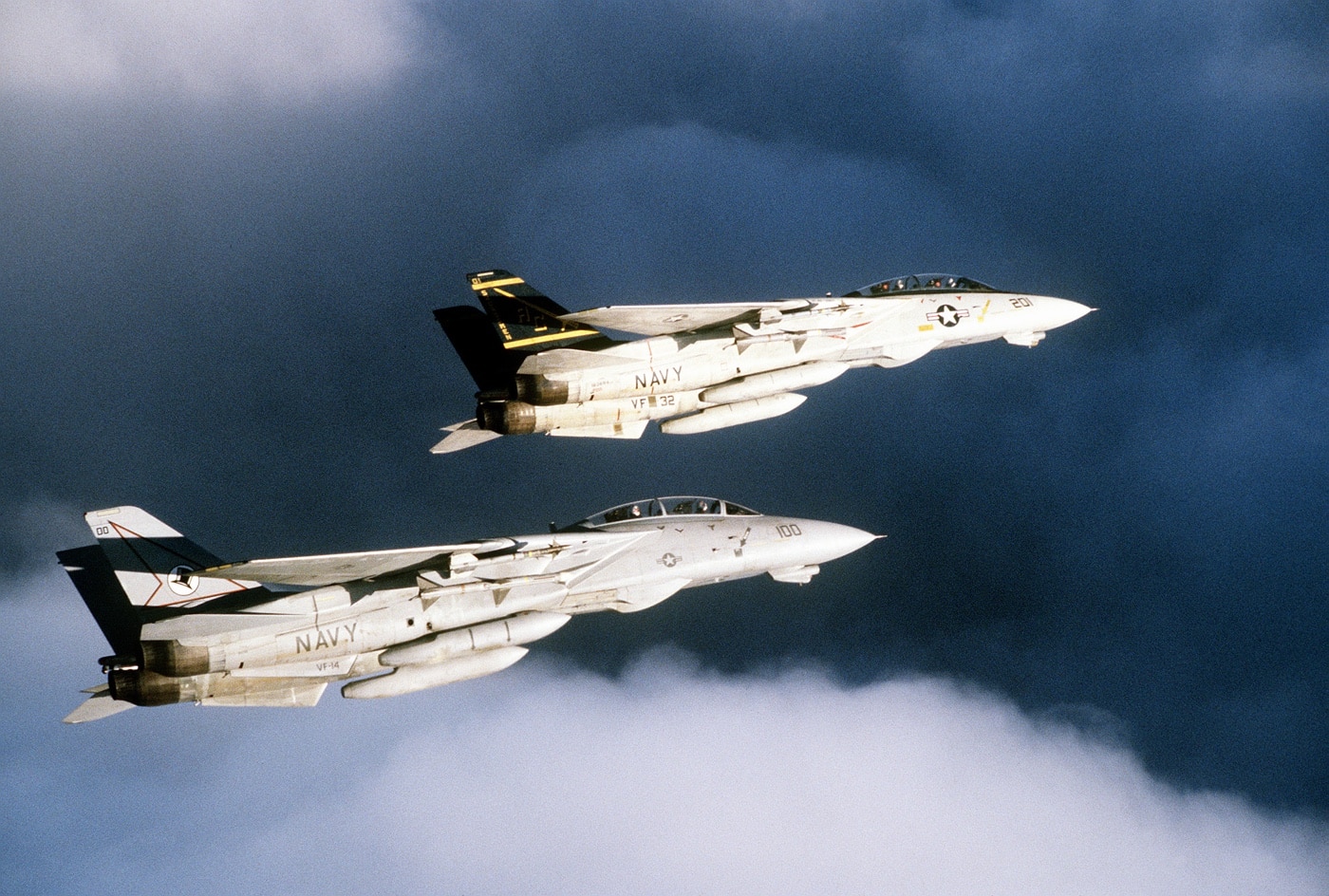
When Cruise’s “Maverick” and Miles Teller’s “Rooster” are downed behind enemy lines in an undisclosed nation, that appears to be the Islamic Republic of Iran, they manage to steal a Grumman F-14 Tomcat. The amazing coincidence of it being the same aircraft Cruise flew in the first movie aside, it might seem unbelievable that one would be still in operation — especially in the air force of a nation that is clearly the enemy of the United States of America.
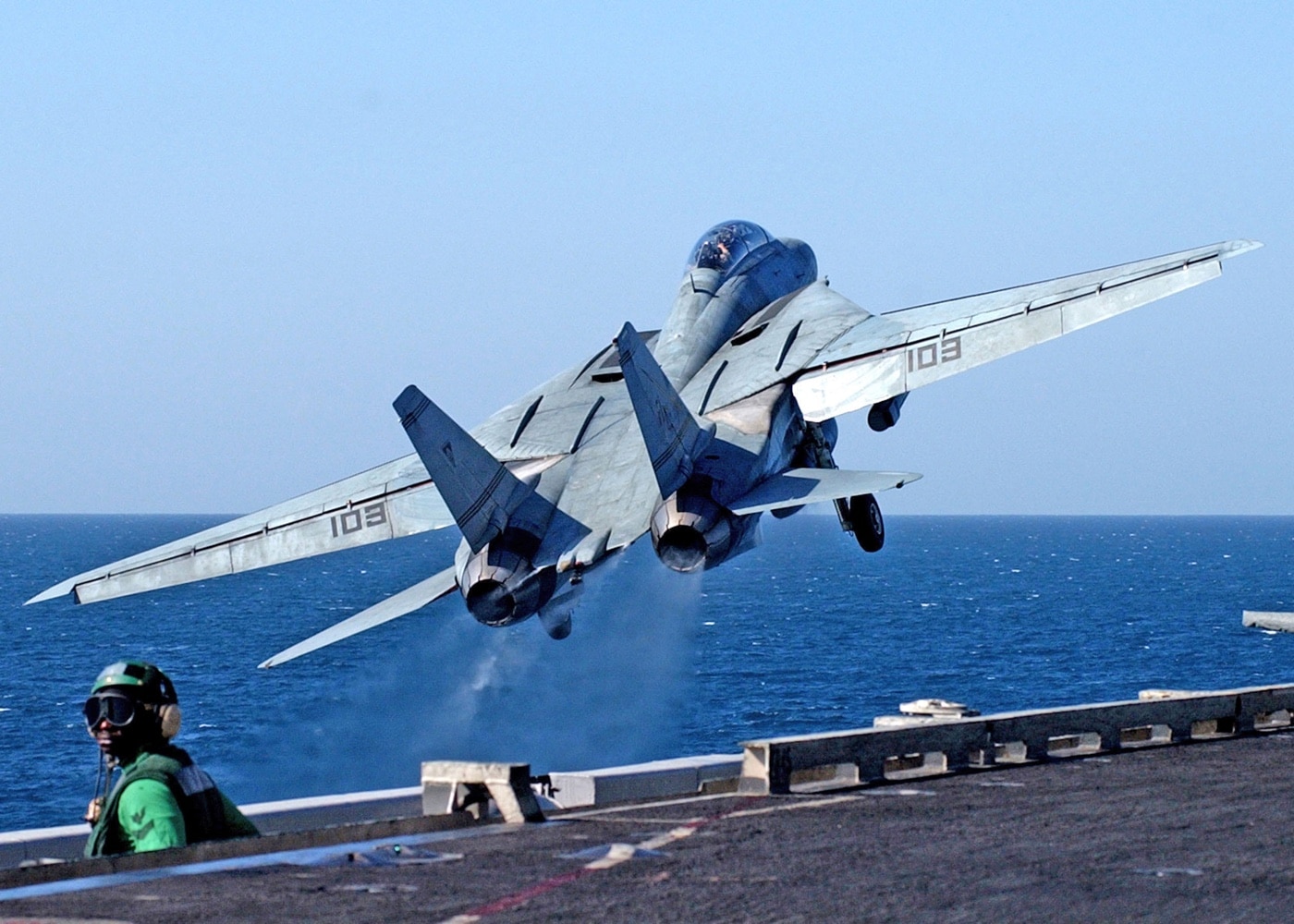
Yet, this is where truth can be stranger than fiction.
While the United States Navy retired this multirole carrier-based fighter in September 2006, a handful are very much still in service with the Islamic Republic of Iran Air Defense Force today. The tale is a curious one. Before I tell it, let us back up and talk about the plane first.
A New Carrier-Based Interceptor
In the 1960s, aircraft maker Grumman (now part of Northrop Grumman) partnered with General Dynamics to develop the F-111B, a long-range carrier-based interceptor aircraft variant of the F-111 Aardvark. In 1968, as it became increasingly evident that the program wouldn’t move forward, Grumman began working on a replacement.
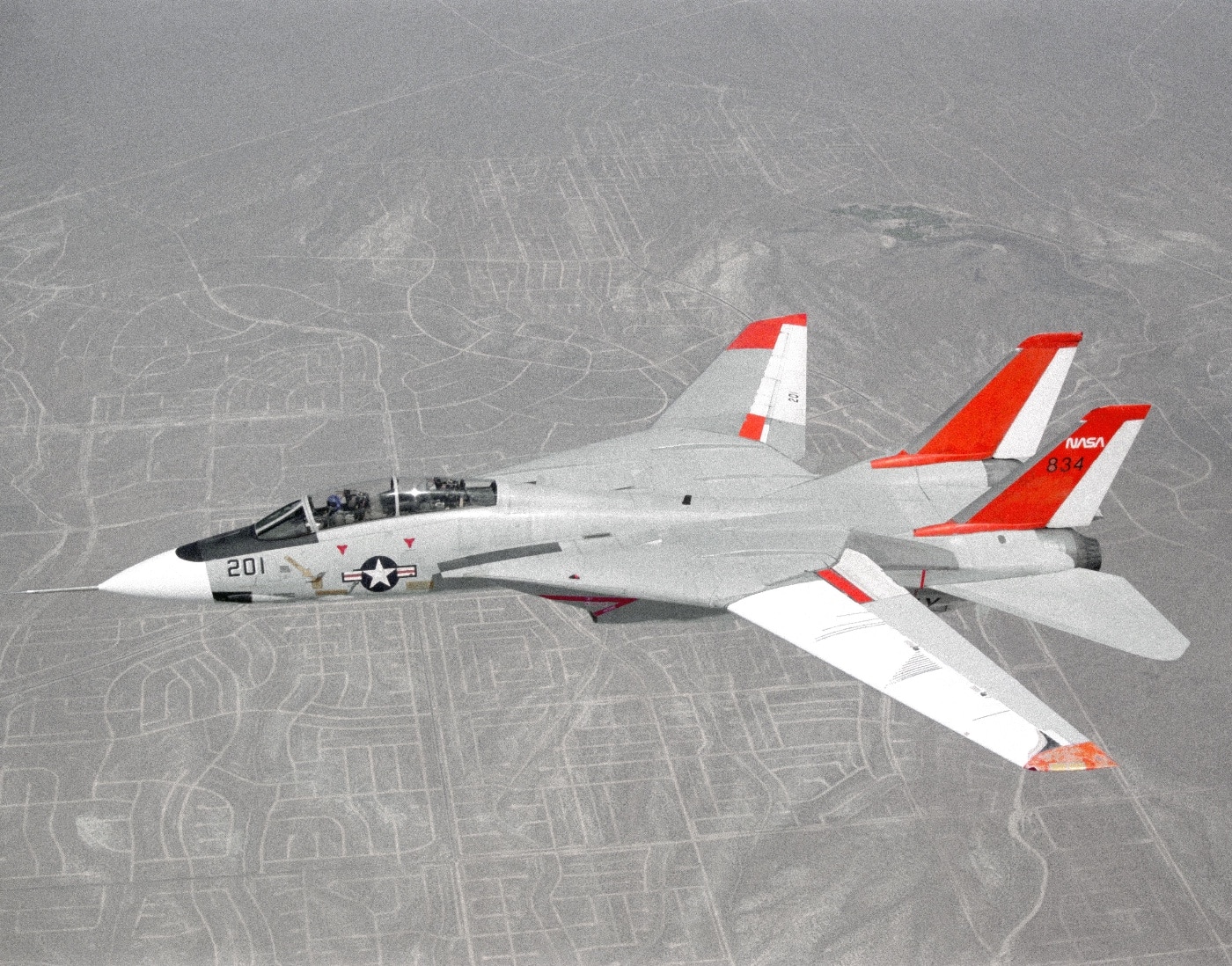
It was almost a clean slate, except for the TF30 engines and Hughes AWG-9 radar, and the fact it was designed to carry the same Hughes AIM-54 Phoenix long-range air-to-air missile (AAM). In addition to the same power plant, the F-14 included the variable-geometry wings of the General Dynamics F-111 Aardvark that are now so iconic.
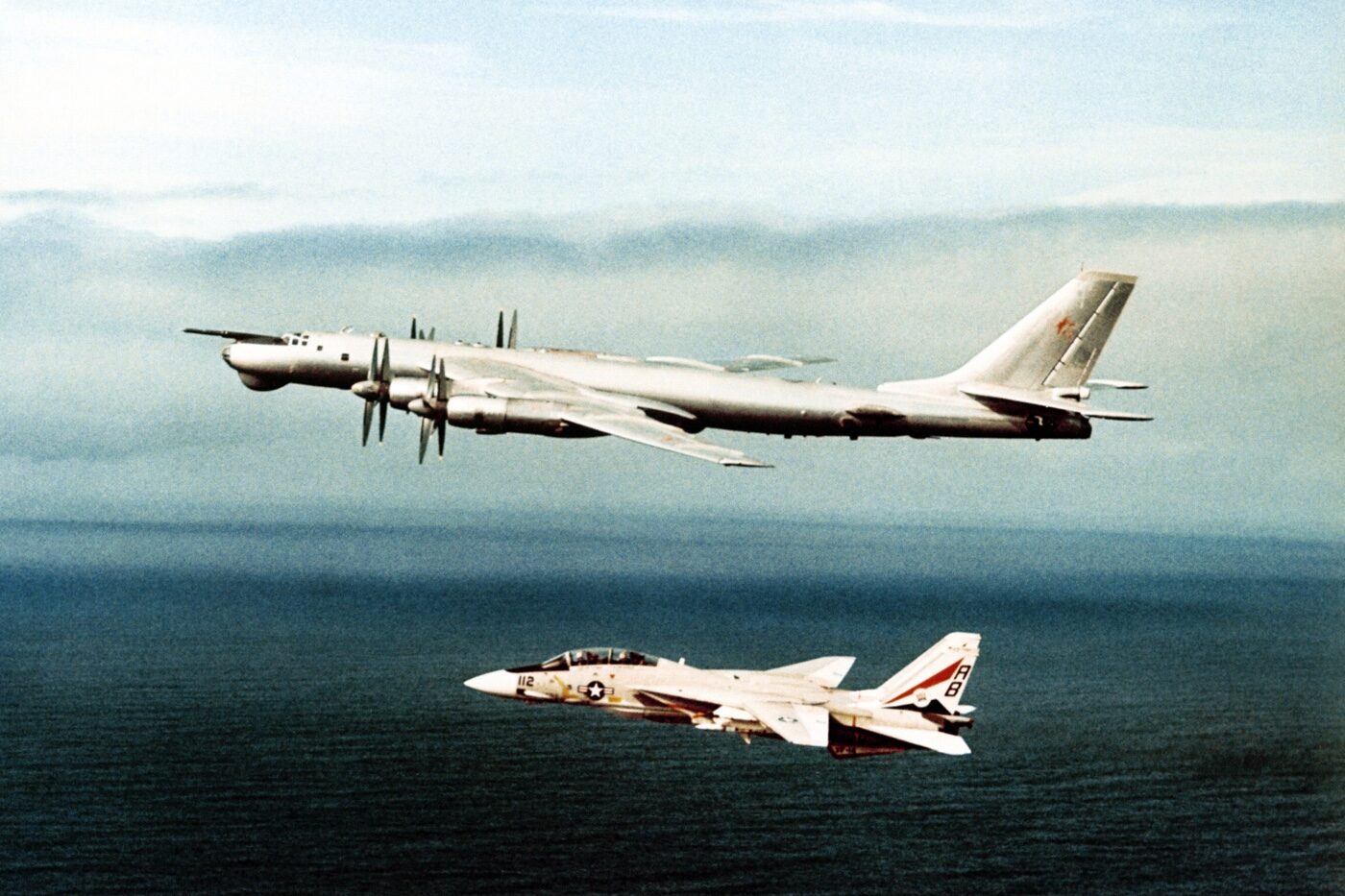
Grumman’s F-14 was a fully new and uncompromised design, and it was selected as the winner of the Navy Fighter Experimental (VFX) competition in January 1969. By December 1970, the first of the six R&D prototypes made its maiden flight.
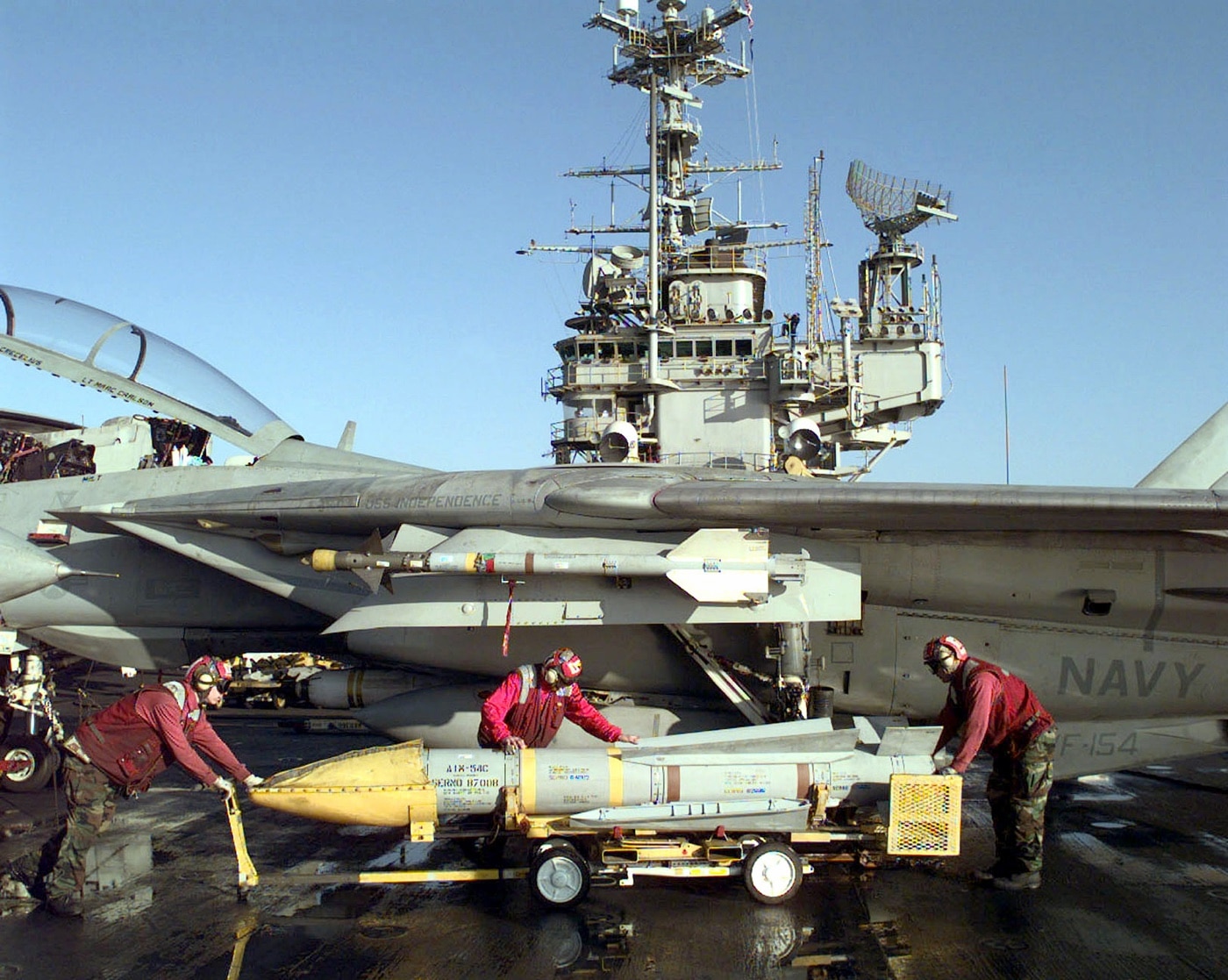
One notable change with the Tomcat was that, unlike the planned F-111B, no effort was made to achieve commonality with other aircraft. This gave Grumman’s design team an incredible amount of flexibility when engineering the air superiority fighter.
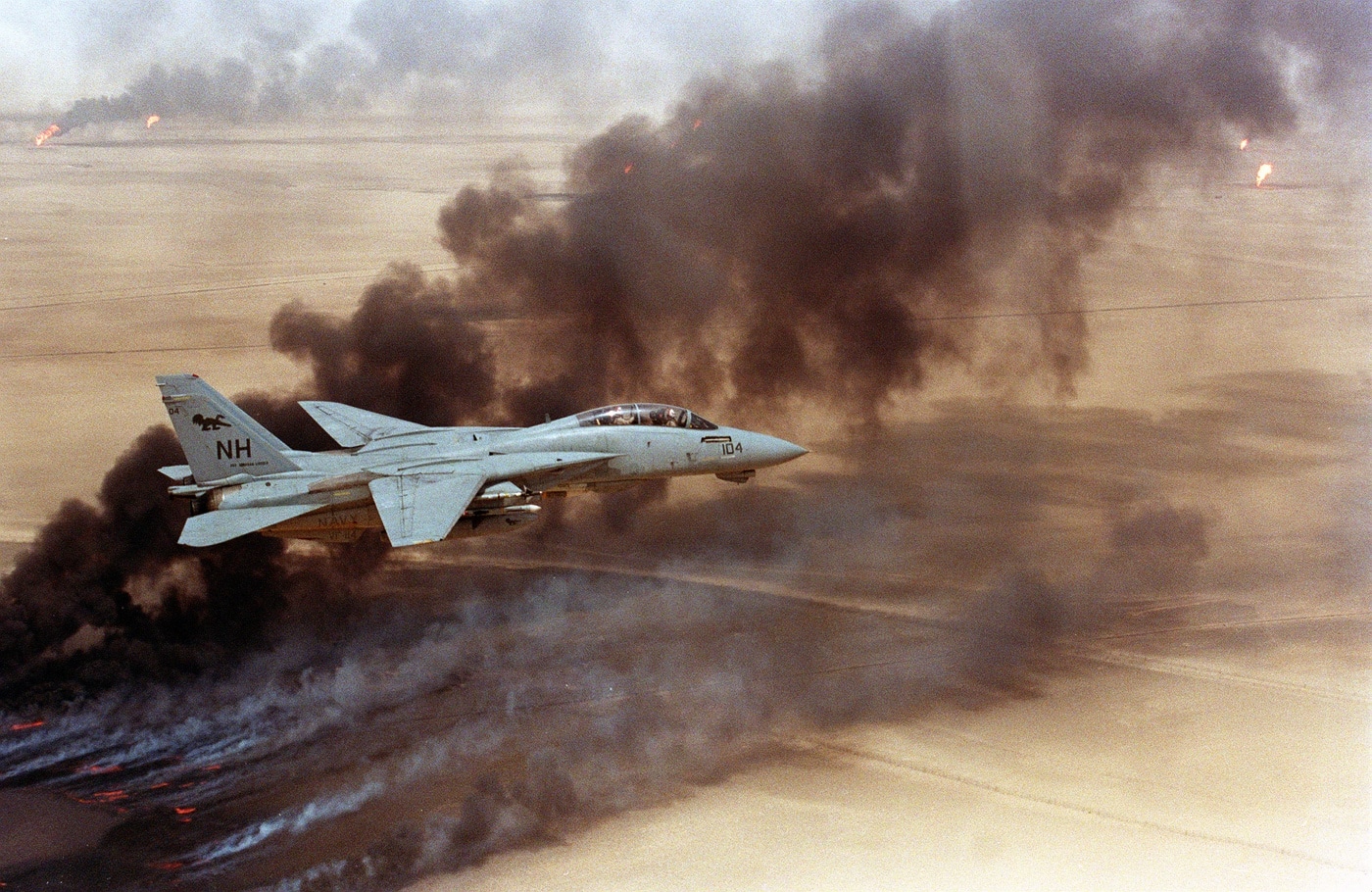
The F-14 Tomcat fighter made use of aerodynamic innovations that were truly tailored to naval aviation, and that included its retractable foreplanes in the fixed portion of the wing leading edge. That design innovation served to prevent pitching when the wings were swept back.
The swing wing was able to take up any angle between 20 degrees and 68 degrees based on the varying demands of the mission — and the main advantage was that it reduced takeoff and landing speeds, facilitating catapult accelerated launches at high gross weights, which helped reduce fuel consumption in subsonic loiter and enable higher altitudes to be reached at low subsonic speeds.
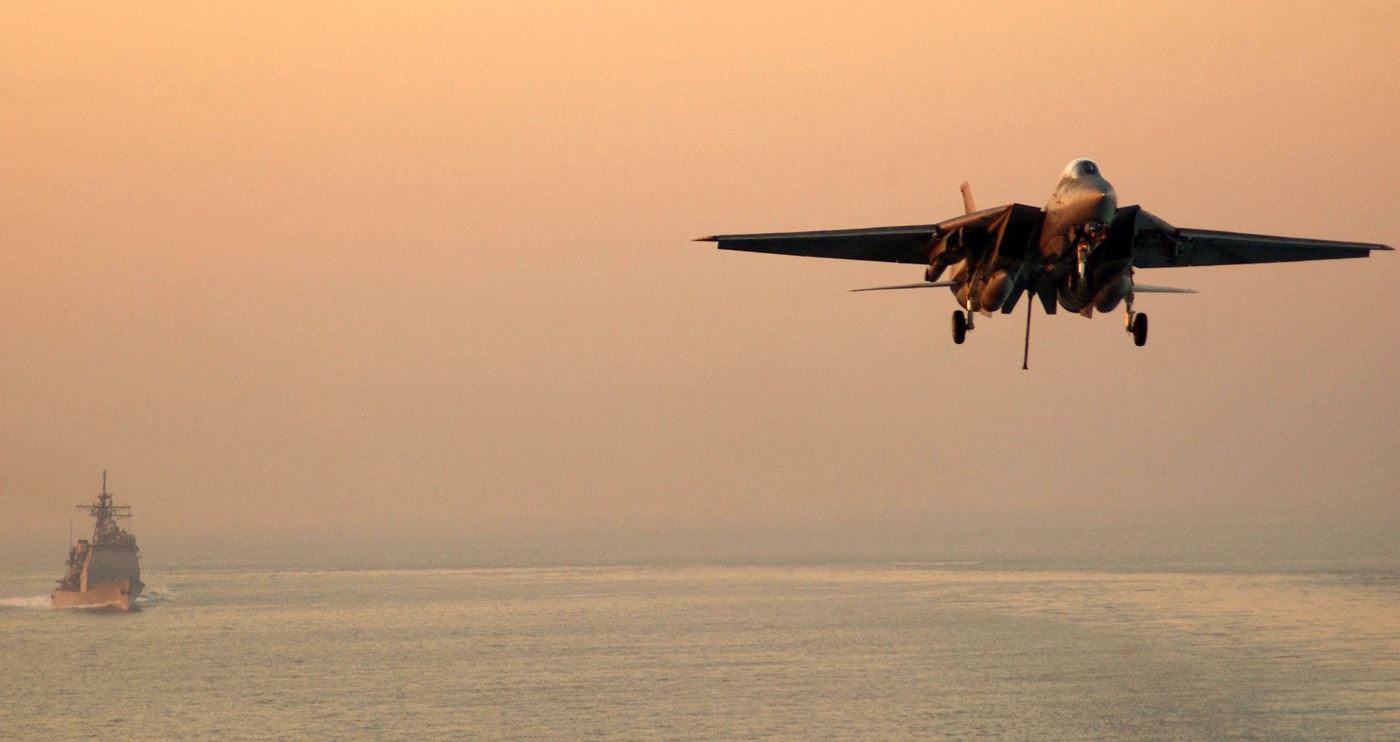
Less than two years after taking its first flight, the F-14 entered service with the U.S. Navy — a timeline that seems almost unimaginable today. The new fighter was given the name “Tomcat” in part keeping with the Grumman “cat” names of past aircraft but also to honor U.S. Navy Admiral Thomas “Tomcat” Connelly who pushed Congressional lawmakers to fund the development of a carrier-based fighter for the sea service.
In total, 712 F-14 Tomcats were built.
Top Gun Made the F-14 Famous
Thanks to 1986’s Top Gun, the F-14 Tomcat remains as iconic to the 1980s as Kenny Loggins’ song Danger Zone and Berlin’s Take My Breath Away — the two hit songs from Top Gun — along with Harold Faltermeyer’s and Steve Stevens’ Top Gun Anthem. In the film, the Tomcat was arguably as big a star as Cruise and Val Kilmer.
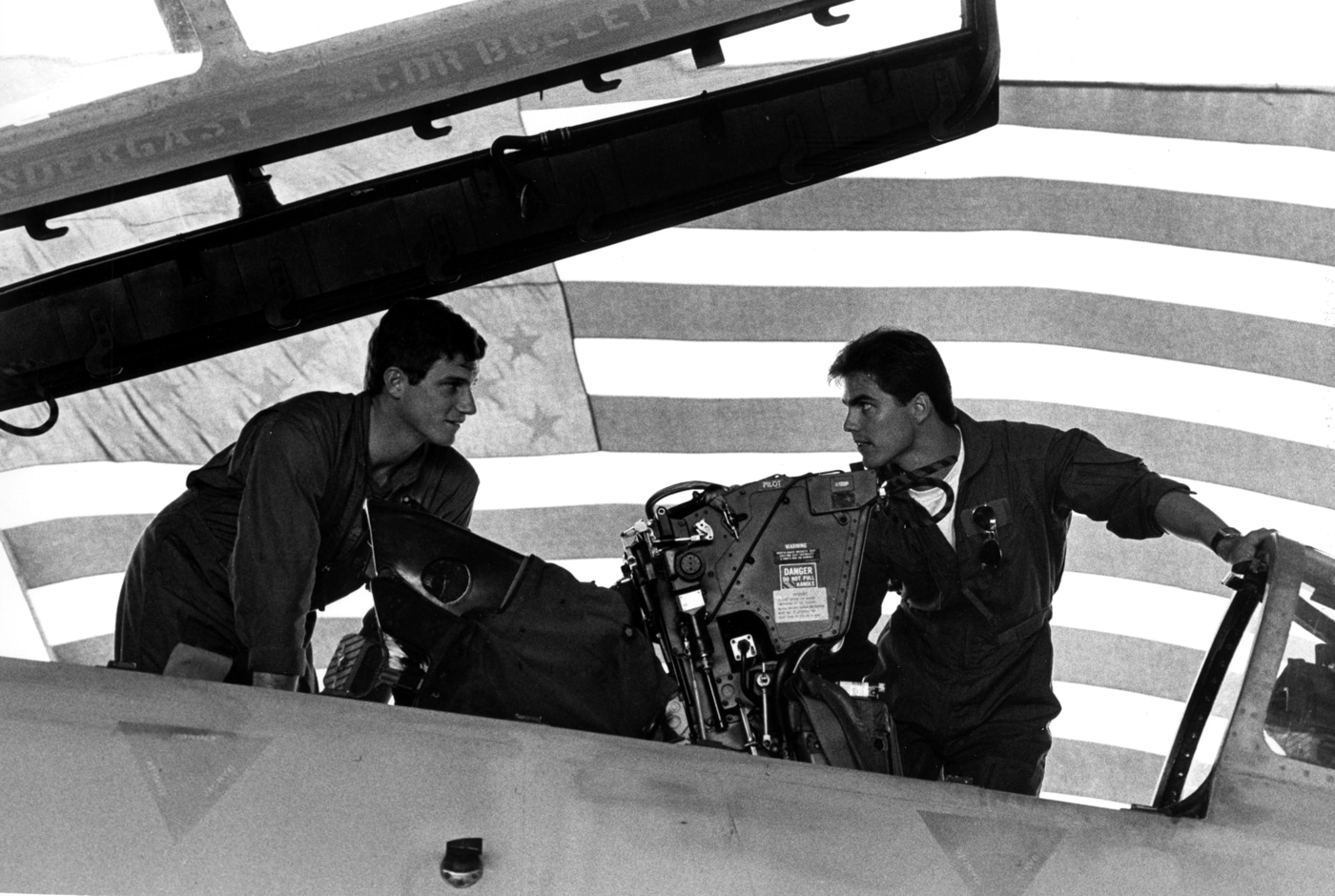
What some Top Gun fans may forget is that the F-14 Tomcat had already made its big screen debut six years earlier in the 1980 film The Final Countdown, starring Kirk Douglas and Martin Sheen. That science fiction-themed thriller saw the USS Nimitz (CVN-68) transported back in time to December 1941, just days before the Imperial Japanese Navy’s attack on Pearl Harbor. In the film, two F-14s have their moment in the spotlight shooting down a pair of IJN Mitsubishi A6M “Zero” fighters.
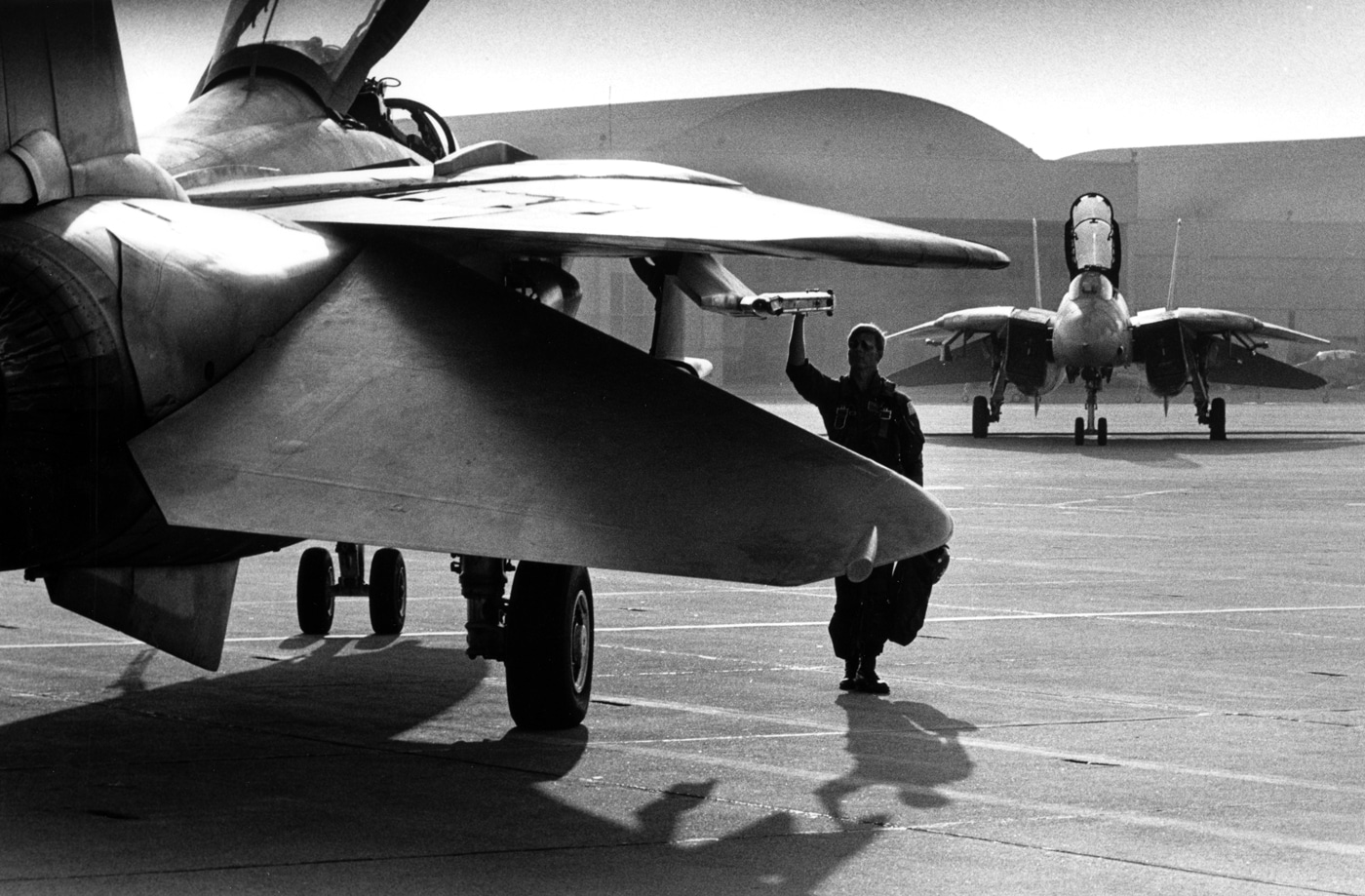
Interestingly, the replica Zeros had been made for the 1970 film Tora! Tora! Tora! about the attack on Pearl Harbor. During filming they were almost accidentally downed by the Tomcats due to turbulence caused by the modern fighters.
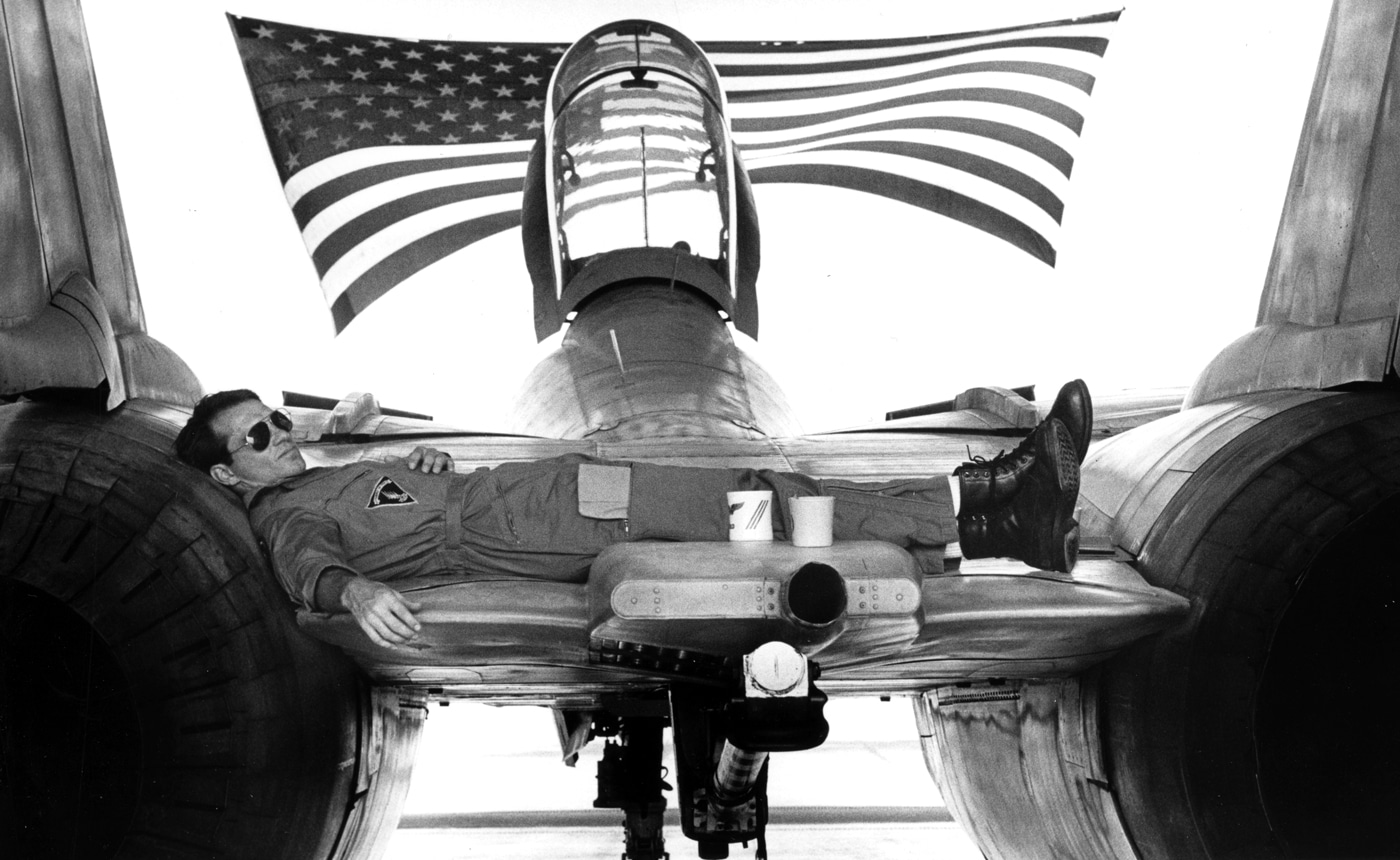
The “kills” in the movie also came before any U.S. Navy Tomcats have bared their claws in aerial combat. While viewers were no doubt ready for an even bigger showdown between the Tomcats and Zeroes, the film’s plot called for the carrier to return to the present day just as the Japanese launched their attack.
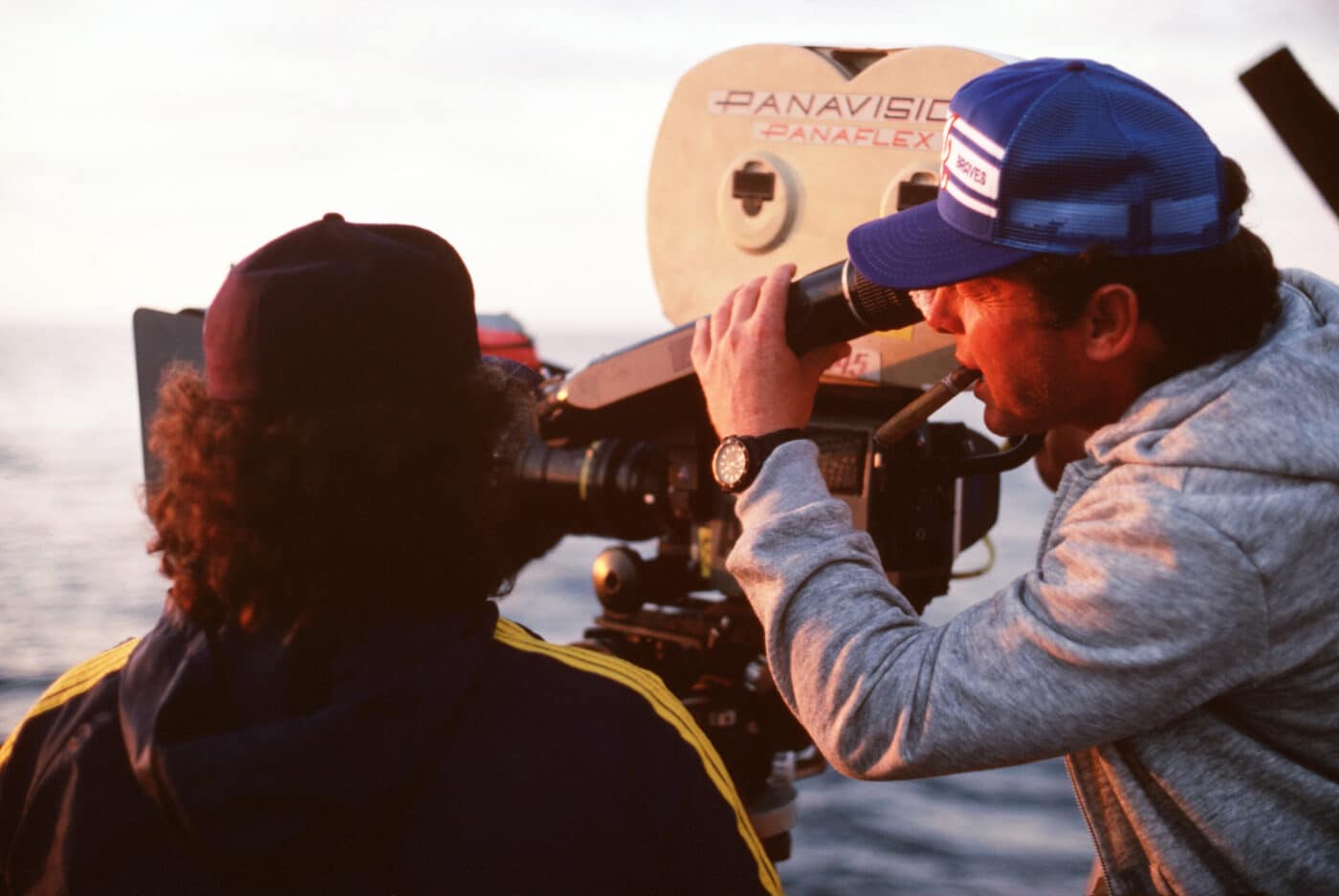
Audiences thus had to wait for Top Gun to truly see the F-14 Tomcat in action, where it went up against modern aircraft — the fictitious Mikoyan MiG-28, which were really Northrop F-5 fighters. Top Gun went on to be the top-grossing film of 1986.
The Grumman F-14 Tomcat in Combat
Another notable part of the F-14 Tomcat’s story is that it wasn’t among the most combat-proven warbirds to see service. It was conceived during the Vietnam War and was introduced in 1974. It served during the Cold War, only to be superseded by the more advanced Boeing F/A-18E/F Super Hornet in the early 2000s.
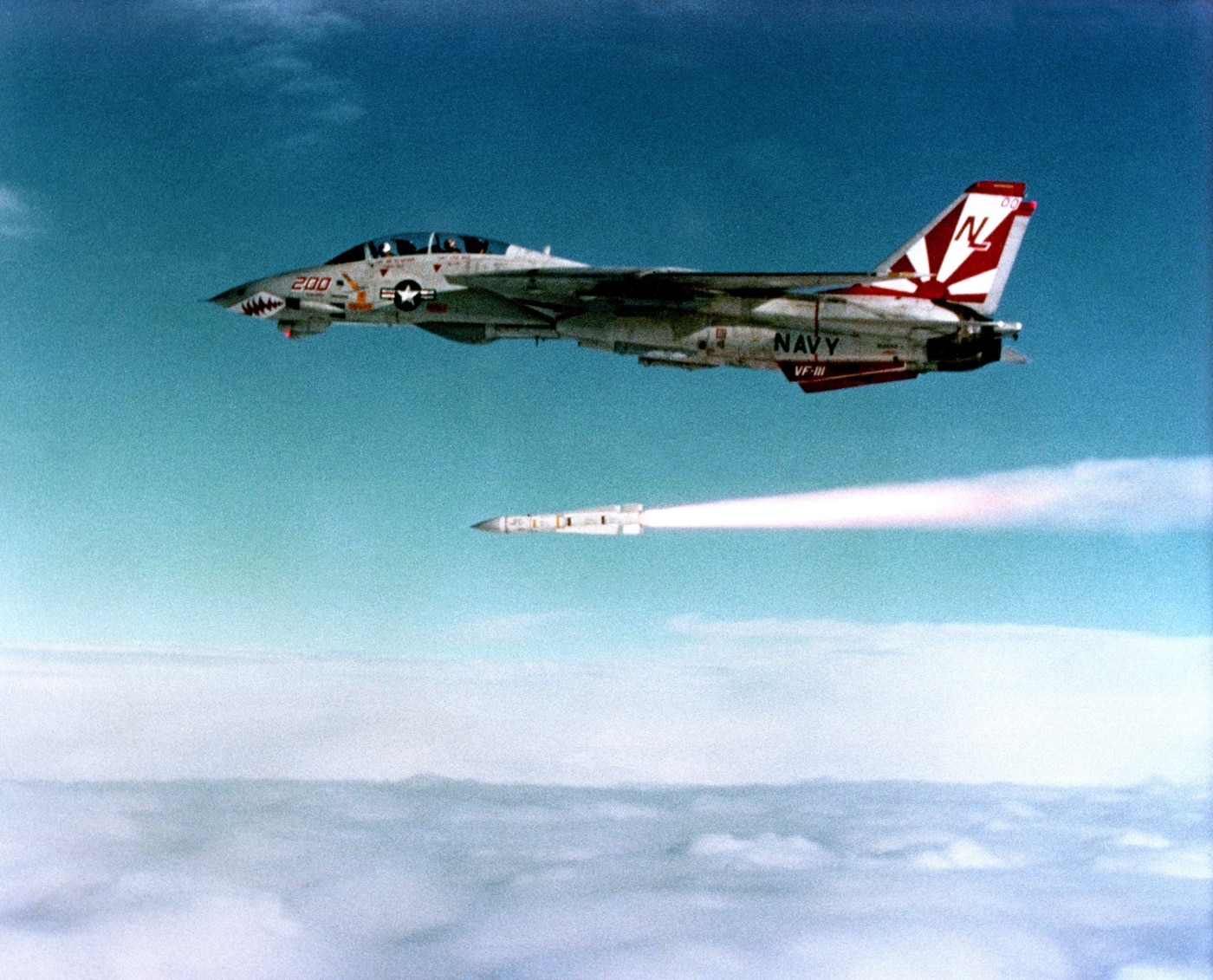
Thus, unlike the U.S. Air Force’s McDonnell Douglas F-15 Eagle, which has been employed in more than 100 combat sorties, and the General Dynamics F-16 Fighting Falcon with its lengthy combat record, the F-14 Tomcat’s service history is far less colorful. This is meant in no way to disparage the Tomcat or those who flew it, just a fact that the aircraft was arguably the right aircraft but it arrived at the wrong time to see any significant aerial action.
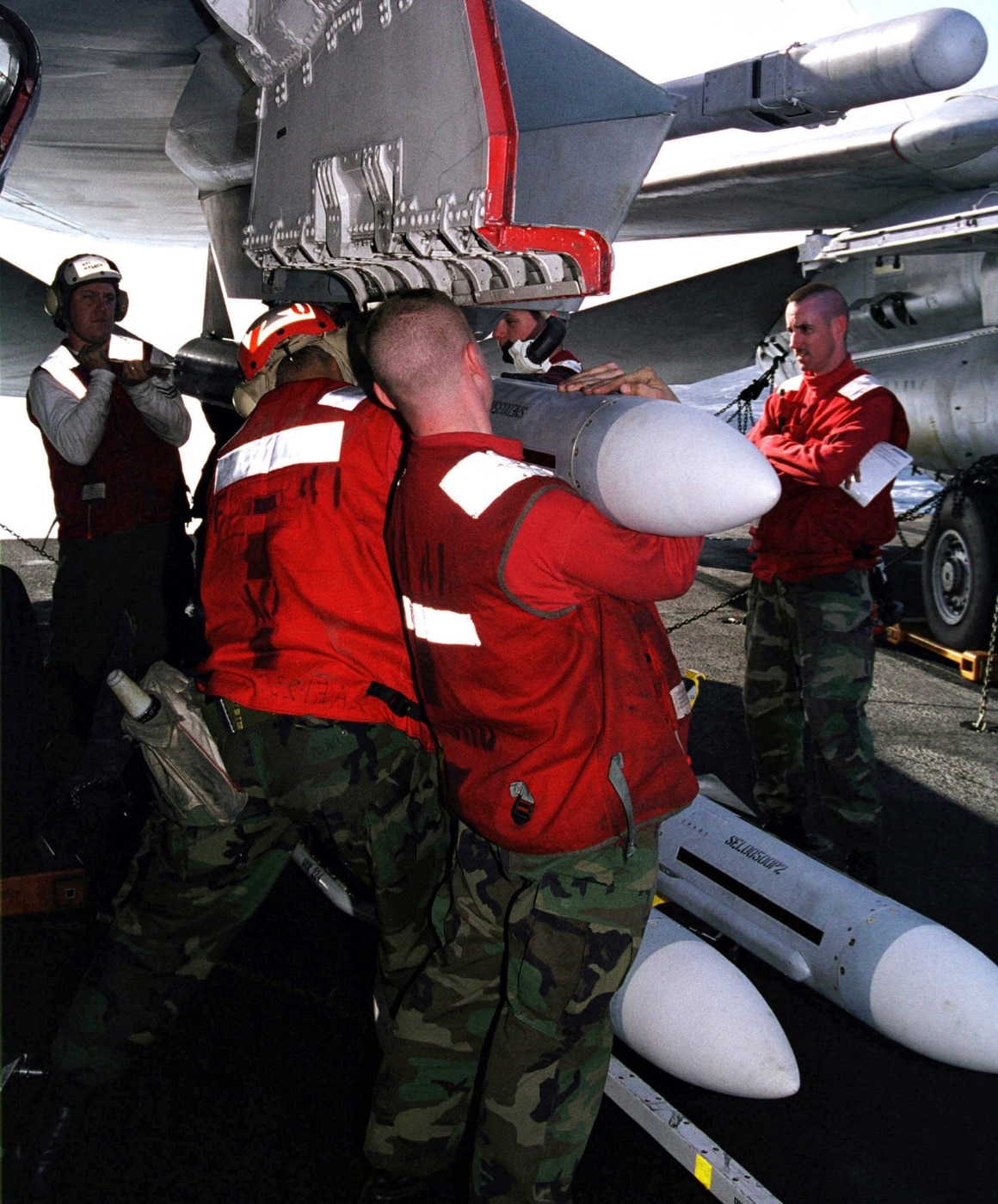
When Top Gun scored a direct hit with viewers, the Navy’s fighter had only two “kills” in U.S. service. Its combat baptism occurred during the Gulf of Sidra incident in August 1981. Two F-14 Tomcats from the U.S. Navy’s Strike Fighter Squadron 41 (VF-41) “Black Aces” operating from the USS Nimitz (CVN-68) shot down a pair of Libyan Su-22 fighter-bombers. The Su-22 was an export variant of the Sukhoi Su-17 “Fitter” fighter airplane made in the Soviet Union. Interestingly, the Su-17 and Su-22 were a variable-sweep wing design similar to the Tomcat.
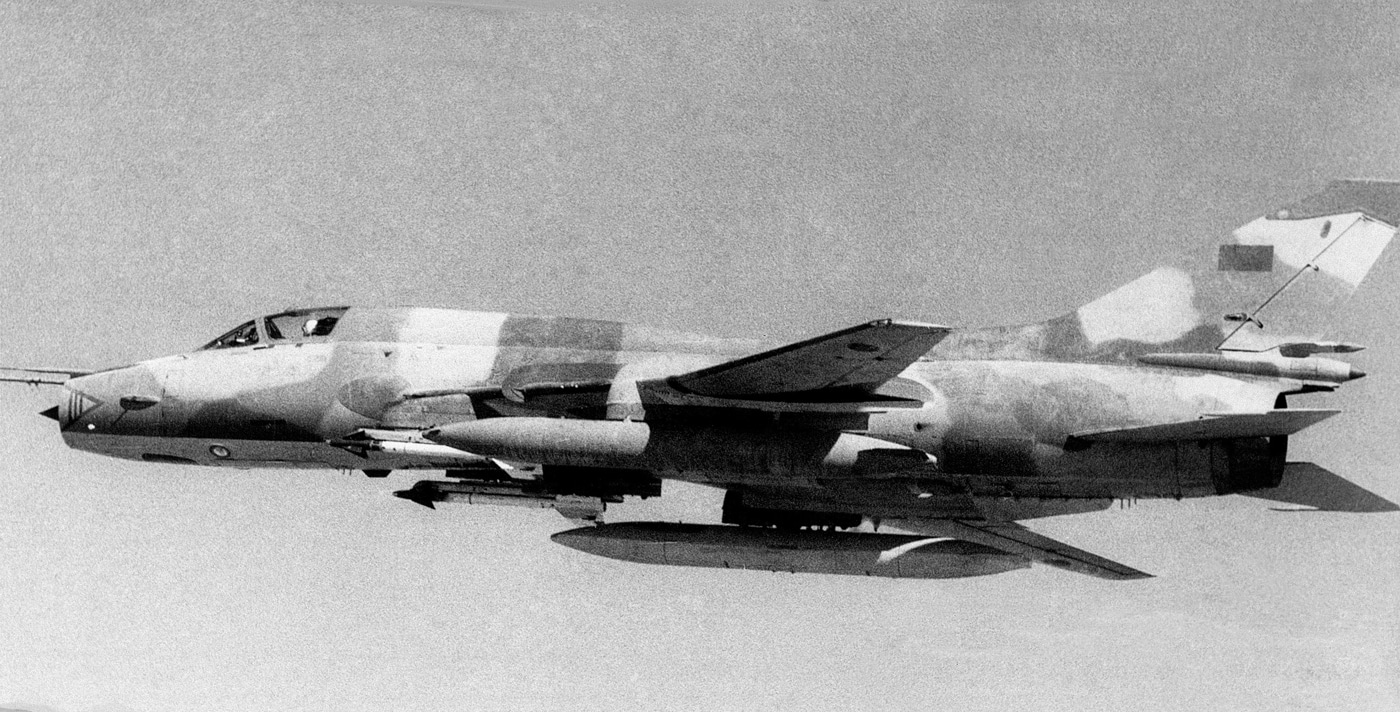
Though the U.S. Navy and Pentagon sought to downplay the battle with Libya, Top Gun served up a heavily fictionalized account that highlighted the aircraft’s capabilities.
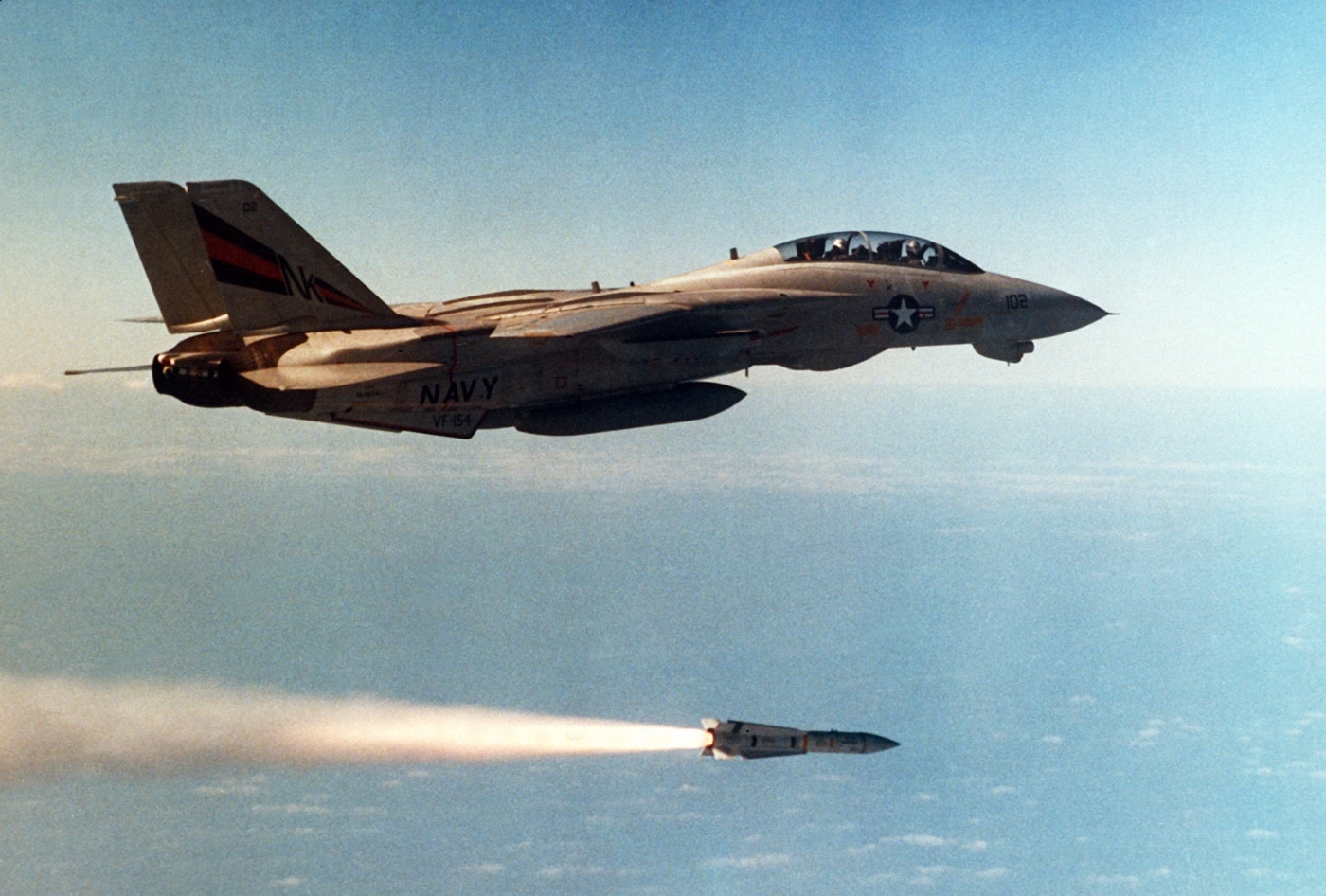
The F-14’s next actual combat sortie didn’t occur until January 1989. In the inelegantly named 1989 Air Battle Near Tobruk, a pair of Tomcats from VF-32 “Flying Swordsman” downed two Mikoyan-Gurevich MiG-23 “Flogger” Libyan fighters over the Mediterranean Sea.
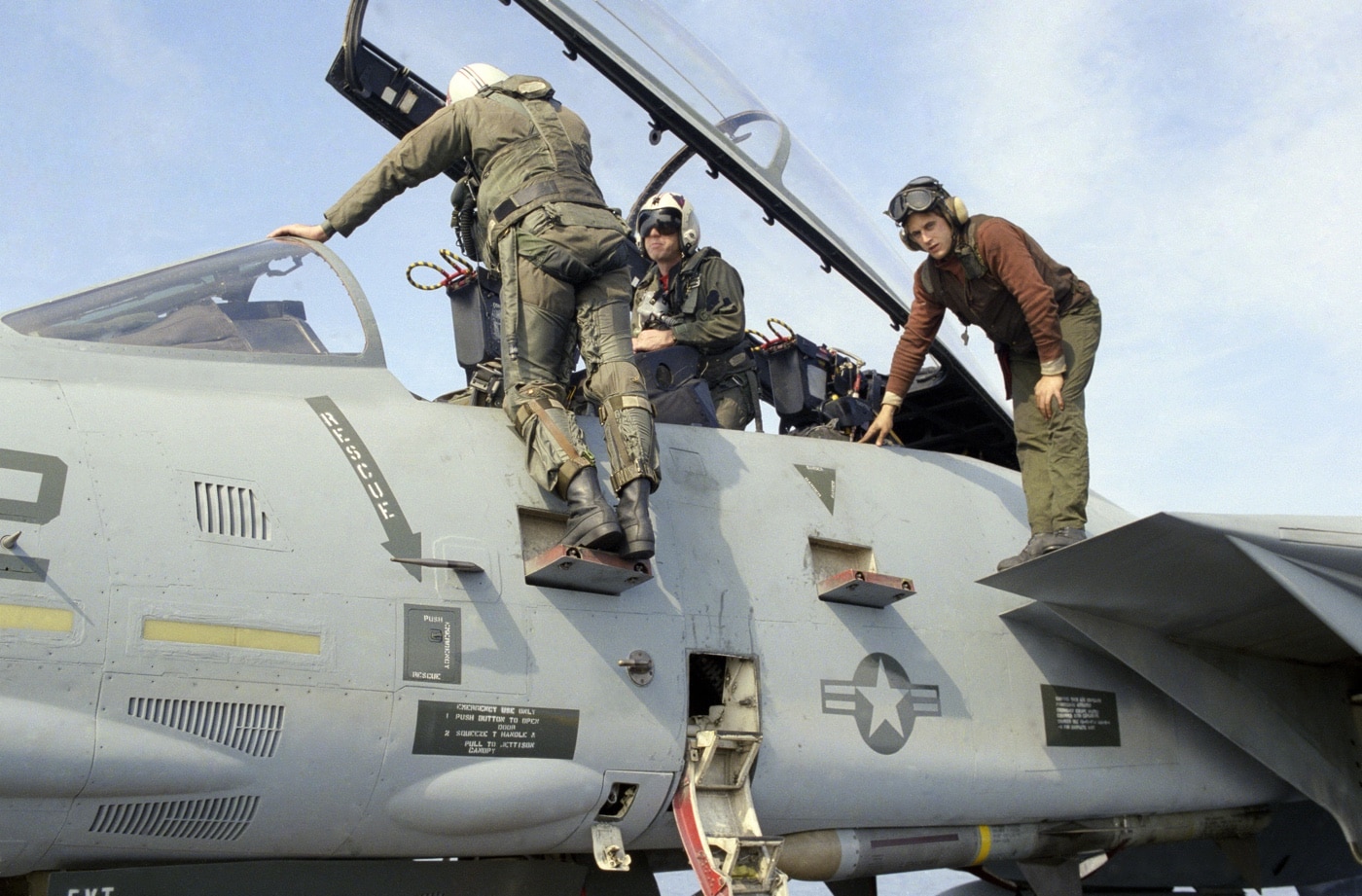
During Operation Desert Storm — the U.S. military’s name for the Gulf War — in 1991, an F-14 downed an Iraqi Mil Mi-8 helicopter. The Tomcat later served in an air policing role over the country during the Iraqi no-fly zones conflict.
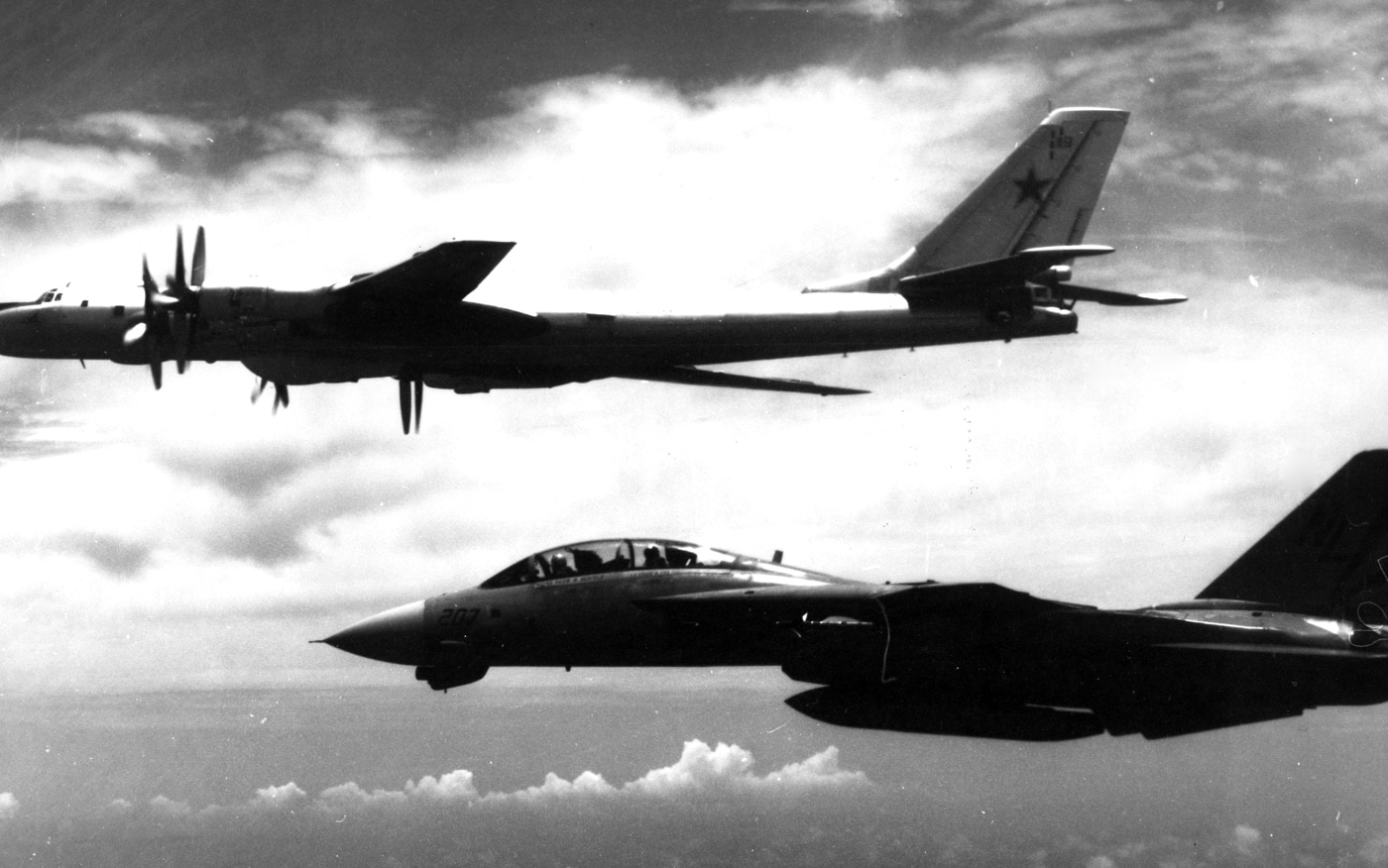
The U.S. Navy F-14 fighter was also employed during the War on Terror in a ground support role, including strike, close air support (CAS), reconnaissance and forward air control during 2001’s Operation Enduring Freedom in Afghanistan, and again in 2003’s Operation Iraqi Freedom.
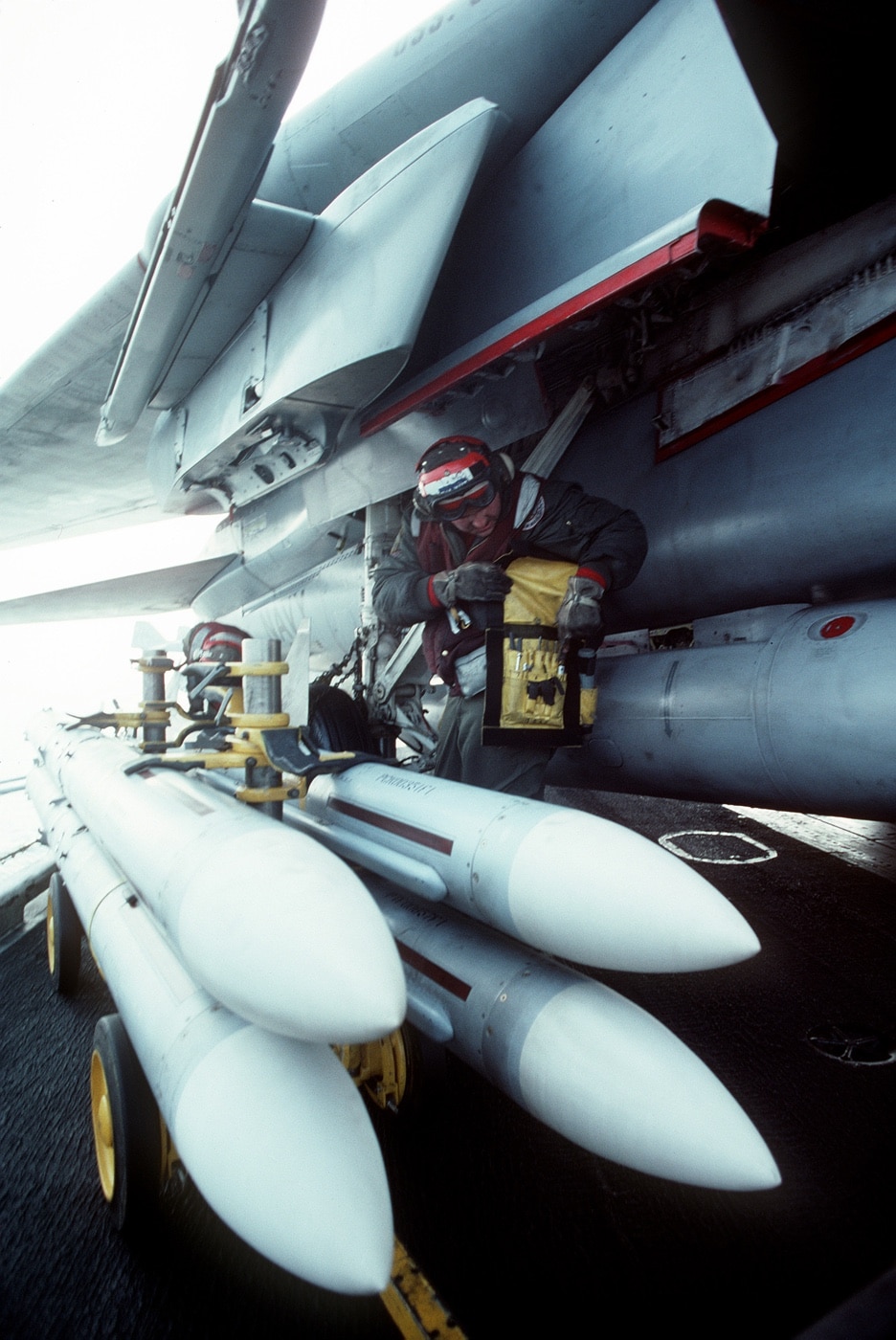
The last two squadrons to operate the F-14 for the U.S. Navy were Fighter Squadron (VF) 31 “Tomcatters” and VF-213 “Black Lions.” Operating from USS Theodore Roosevelt, the squadrons collectively completed 1,163 combat sorties, totaling 6,876 flight hours, dropping 9,500 pounds of ordnance. The Tomcat’s last combat mission was completed on February 7, 2006.
Iran’s F-14s: How’d That Happen?
While the F-15 Eagle, F-16 Falcon, and F/A-18 Hornet were all widely exported to nations around the globe, that wasn’t the case with the Tomcat. Attempts were made to sell the F-14 to various partners including Canada, Germany and Japan. However, the United States Navy and the Imperial Iranian Air Force were the only two operators of this remarkable aircraft.
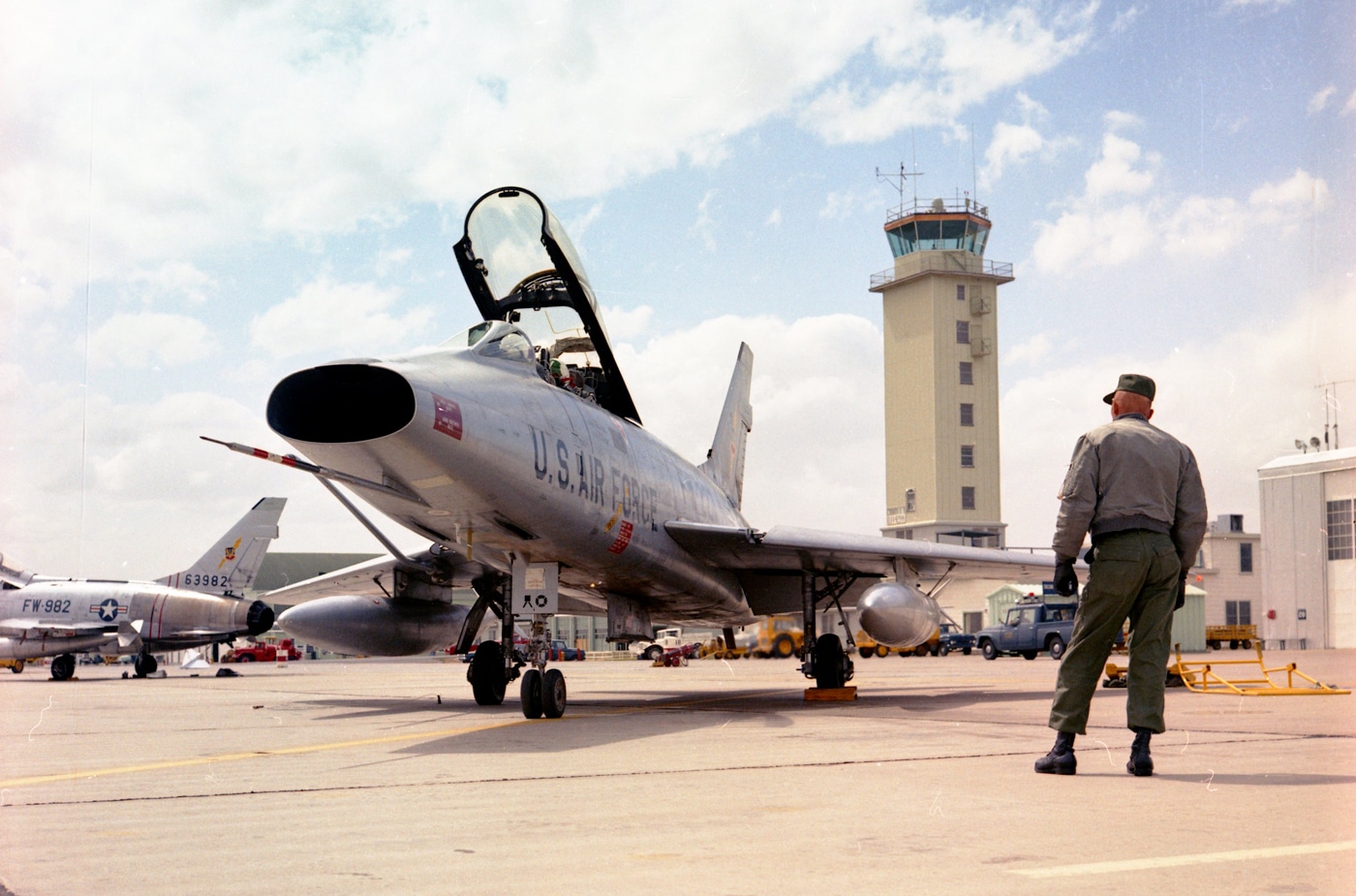
Prior to the Iranian Revolution, also known as the Islamic Revolution, in 1979, the Imperial State of Iran was a U.S. ally. As a result the militaries of the two countries trained together and shared military technologies.
Tehran ordered 80 of the fighters, of which 79 were delivered before the revolution.
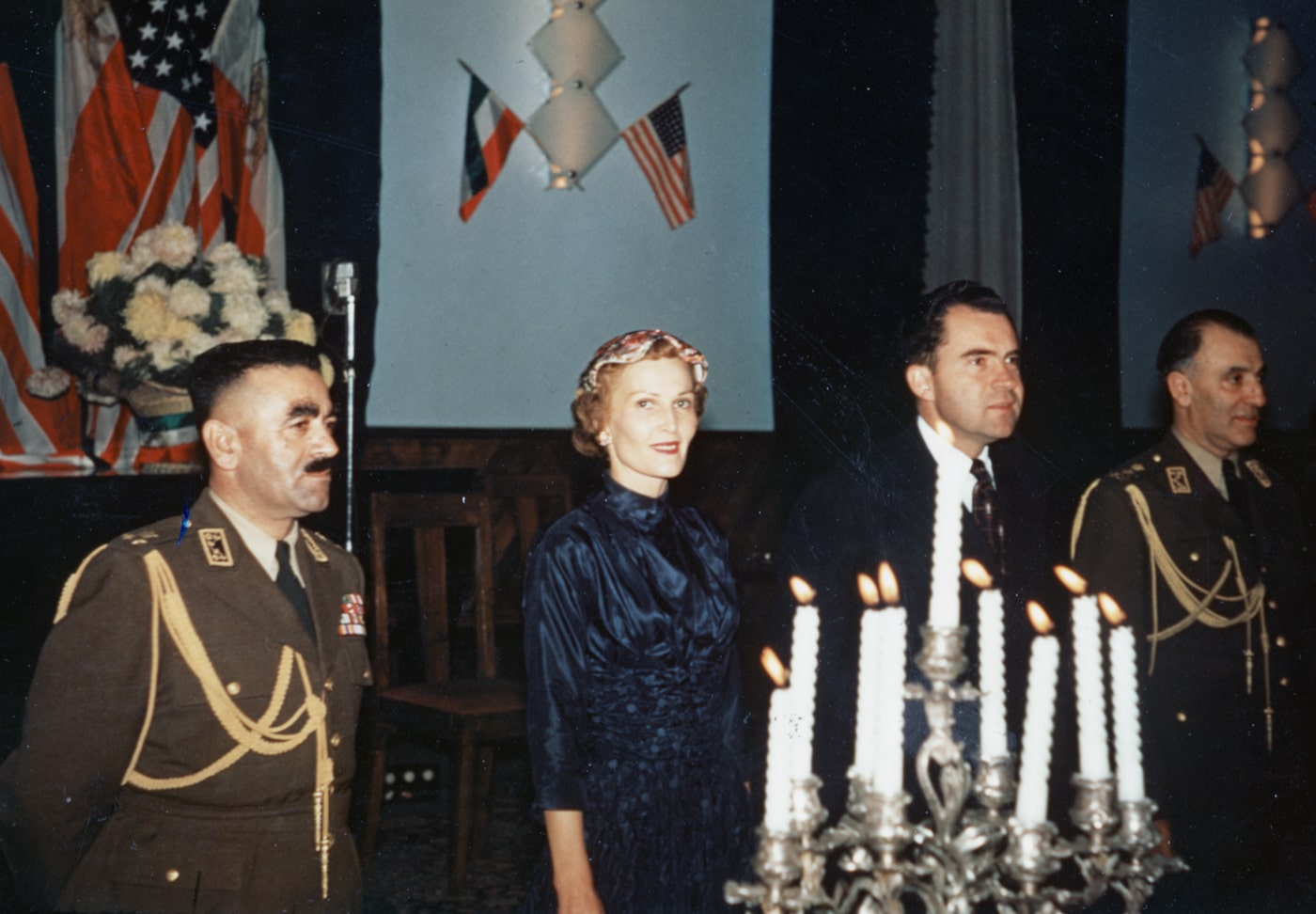
Then came the Islamic Revolution of 1979, and the situation changed considerably. The U.S. cut off support for all the military hardware that had been sold to Tehran, notably the F-14 Tomcats. The thinking at the time was that there was no way the aircraft would remain operational. Shockingly, the Iranian military managed to keep the F-14s flying, and even today there are believed to be more than a dozen that are still airworthy.
That is just part of the story of the F-14 Tomcat in Iranian hands.
The Tomcat in Iranian Service
The other notable part of the F-14 story is that it was a Tomcat in service with the Islamic Republic of Iran Air Force (IRIAF), not the United States Navy, that first drew blood. That occurred in 1980 during the Iran-Iraq War when a Tomcat was crediting for downing an Iraqi Mil Mi-25 helicopter.
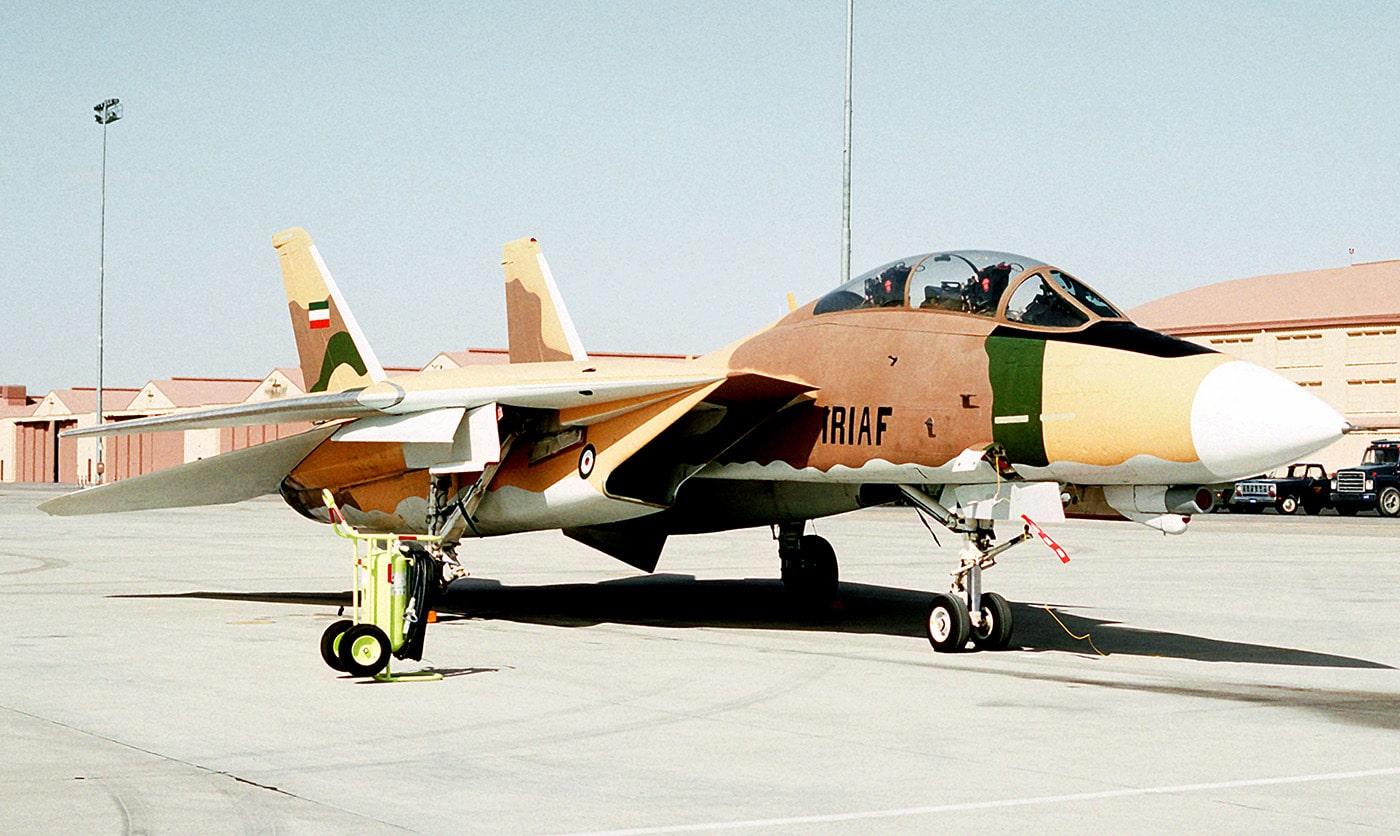
Though the exact combat record remains disputed, it is believed that the F-14 may have scored at least 50 air-to-air victories in just the first six months of the war — shooting down Soviet-made Mikoyan-Gurevich MiG-21 fighters, Mikoyan-Gurevich MiG-23 fighters and Su-20/22 fighter-bombers flown by the Iraqi Air Force.
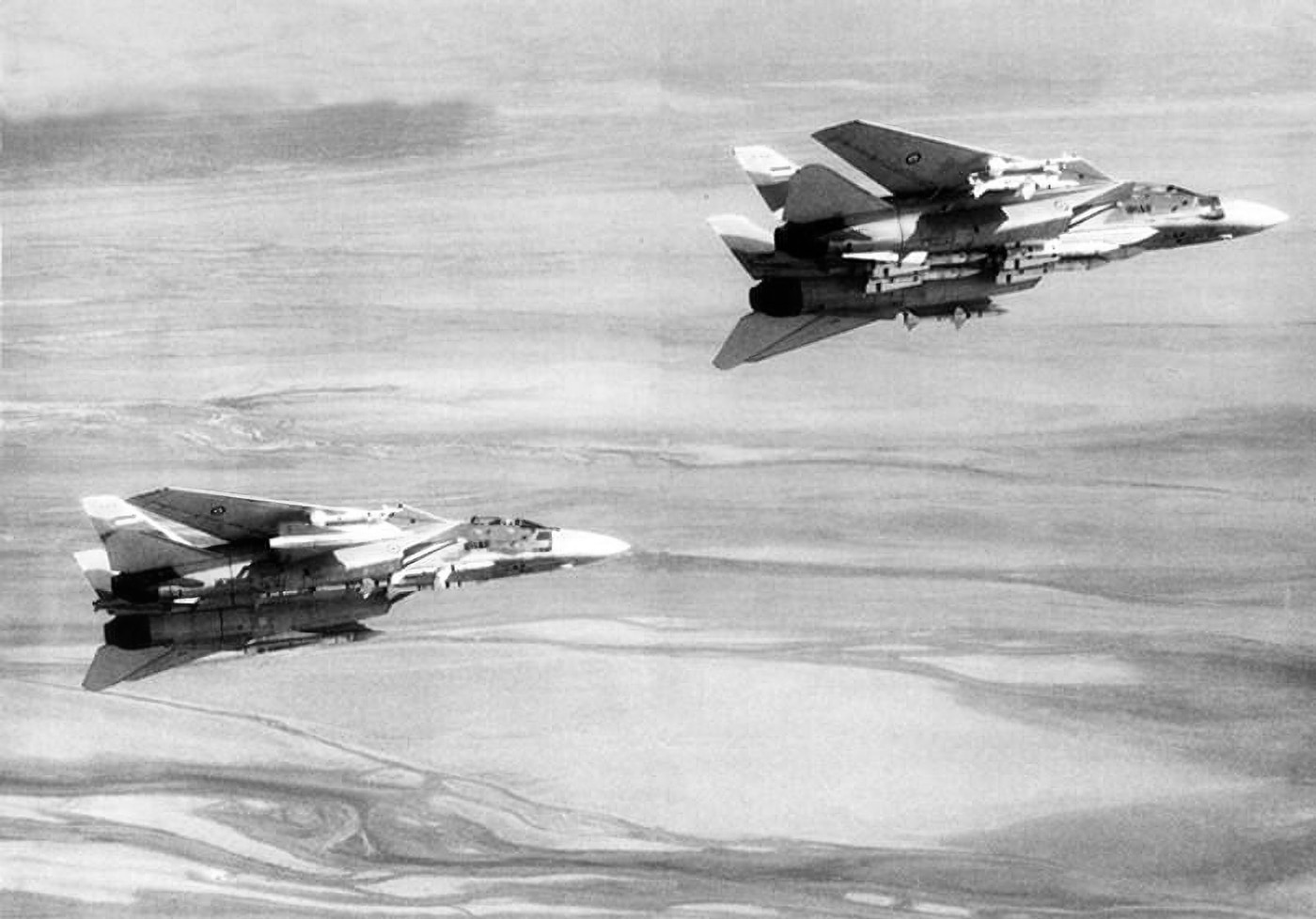
Though Tehran was no friend of the U.S. at the time, the war highlighted that the F-14 was well-suited to take on Soviet aircraft of the era. Due partially to a lack of U.S. support, as well as Iraq’s Soviet-supplied air defenses, Iran lost a significant number from its litter of Tomcats in the war.
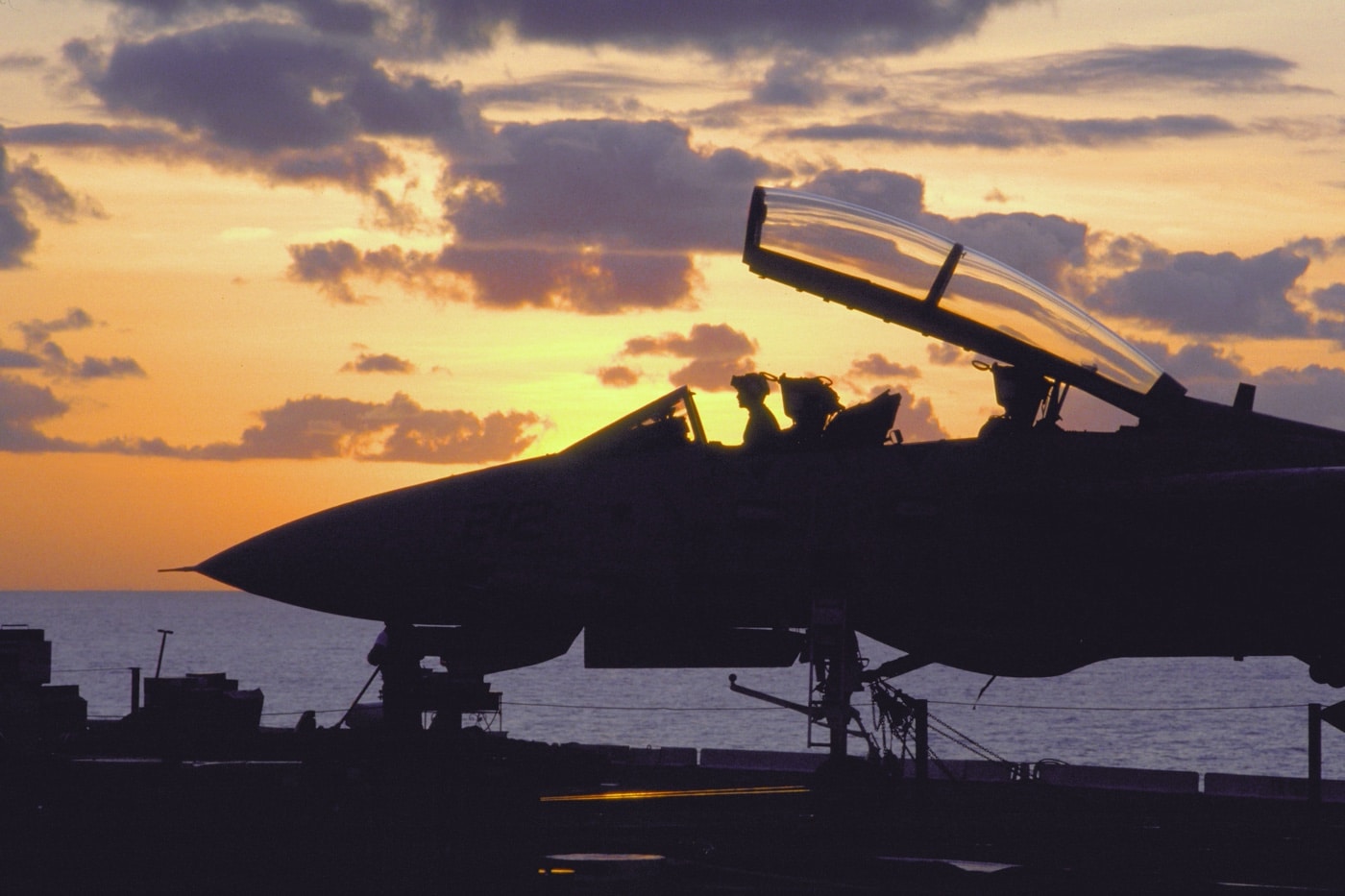
According to some sources, the Iranian military ended the conflict with just 34 operational Tomcats — and Tehran went to great lengths to keep those fighters flying. When the F-14 was retired, Washington even responded by ordering that remaining Tomcats be shredded rather than placing them or the stock of parts in storage at the U.S. Air Force 309th Aerospace Maintenance and Regeneration Group’s “Boneyard” at Davis-Monthan Air Force Base (AFB), Arizona. Normally retired U.S. military aircraft and parts are maintained — but in the case of the F-14, the parts were destroyed so that nothing could be illicitly shared with Iran.
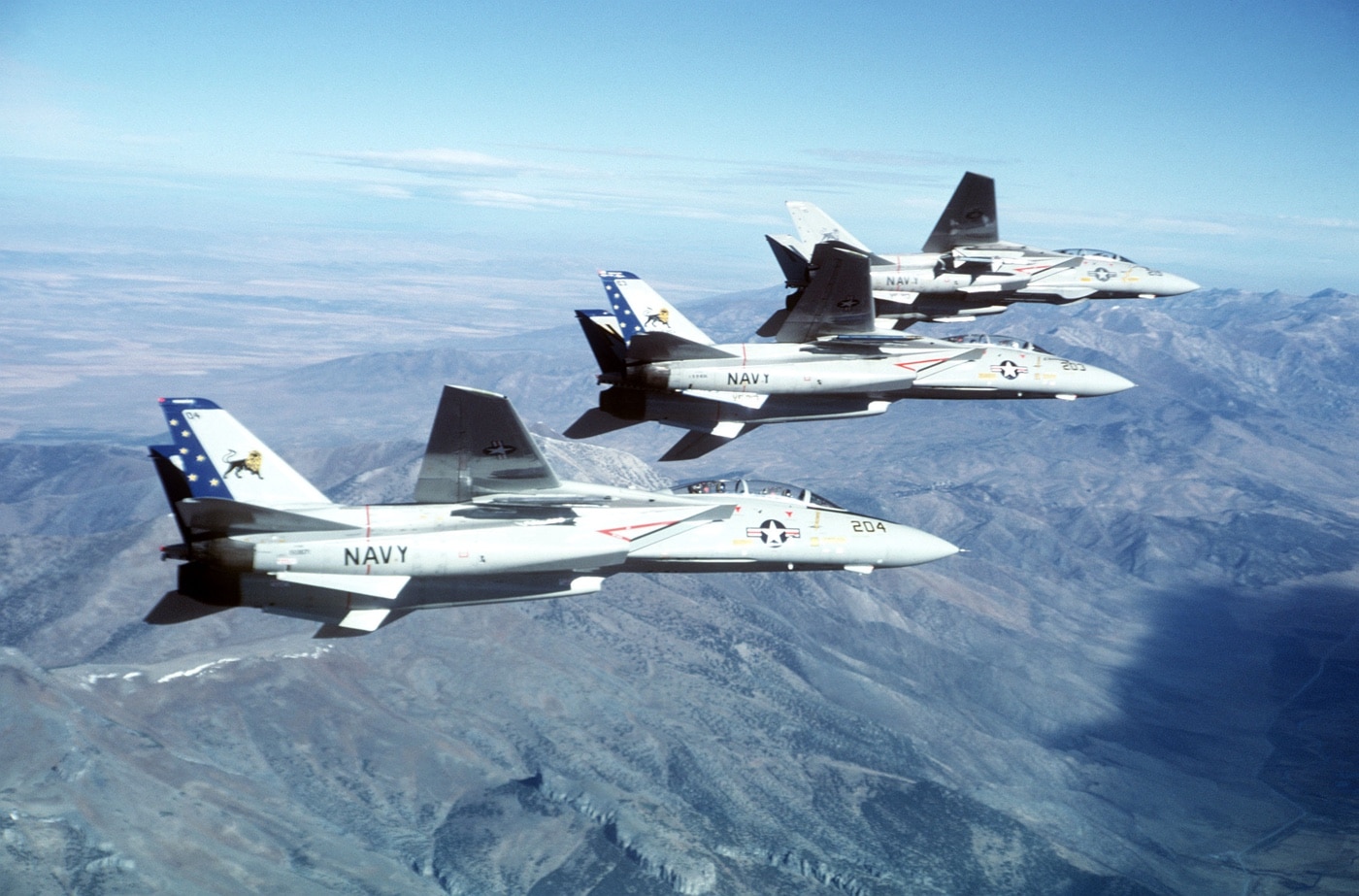
However, the legacy of the F-14 lives on, with dozens of airframes now preserved and on display at museums and military bases in the United States. The majority of those saved are F-14A variants. However, F-14B, F-14D, F-14D(R) and NF-14D models are also preserved and available for viewing around the United States.
Editor’s Note: Please be sure to check out The Armory Life Forum, where you can comment about our daily articles, as well as just talk guns and gear. Click the “Go To Forum Thread” link below to jump in and discuss this article and much more!
Join the Discussion
Read the full article here





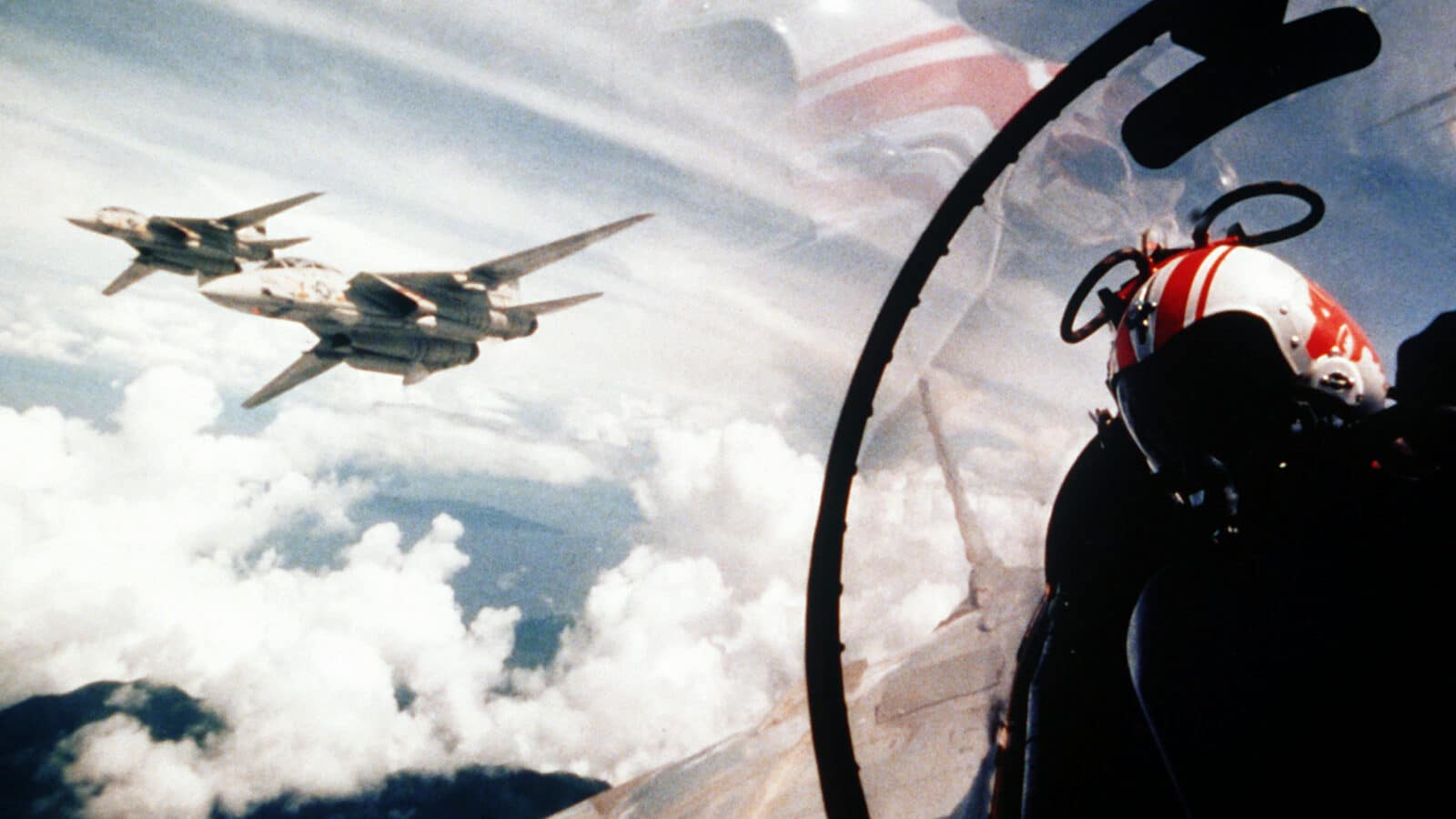












Leave a Reply